

The Quick and Easy Guide to Superyacht Engineering Careers
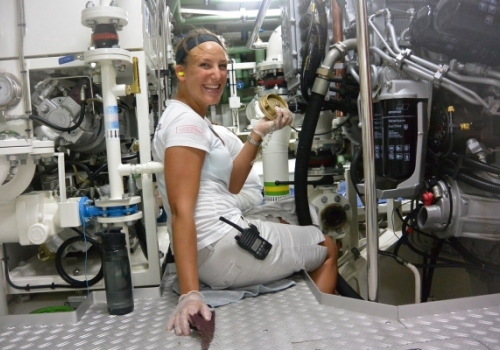
Following on from our guides on superyacht deck and interior careers, it’s time to get our technical hats on and lay out the career pathways for engineering, whether you’re transitioning from another sector or gunning for a chief engineer role.
As always, to keep us on track with the latest training requirements for superyacht engineers, we follow guidance from the experts at the careers guidance platform, Academy by Ephemeris .
What does a superyacht engineer do?
The role of a superyacht engineer varies depending on the size, type and usage of the yacht, and you might be working as a sole engineer, or as part of a team of six or more.
On smaller yachts you will be responsible for the operation, maintenance and repair of all mechanical, electronic, electric, hydraulic, pneumatic systems, and in some instances, also the structural systems and appendages on board.
Notably, on larger yachts there is usually a separation of function between the engineer and the electro-technical officer (ETO) who is responsible for the day-to-day maintenance and operation of all electronic, electrical, communications and audio-visual equipment. This could include radio, radar, telephones, satellite communications (including internet), navigation systems, email servers, TV, sound systems, and security equipment. We will cover how to get ahead on the superyacht ETO careers pathway in our next article.
How do I become a superyacht engineer?
There are two common routes for becoming a superyacht engineer. Firstly, you can enroll in the courses set out by the Maritime and Coastguard Agency (MCA) and work your way through them from the bottom up. These include the Approved Engine Course (AEC), the Marine Engine Operator License (MEOL), and the Yacht 4, 3, 2 and 1 qualifications (with Yacht 4 being the lowest of the four).
Before taking on the Yacht 4 qualification, candidates must already have the MEOL and AEC certificates, or hold an eligible amount of previous experience in another sector first, after which they can progress through the other levels. This is the ideal route if you are totally new to the industry and don’t yet have any practical experience.
The second route to becoming a superyacht engineer involves gaining a relevant qualification, such as a degree in maritime, aerospace or mechanical engineering, before embarking on your yachting career.
The advantage of this option is that you will have a degree under your belt if you decide to change careers later in life. The disadvantage is that it takes longer and will not necessarily offer you any shortcuts in your training to become a superyacht engineer.
What if I already have relevant experience?
If you already have a large amount of sea-service banked, non-yachting certificates or other relevant employment experience, you can apply to the MCA for a Letter of Initial Assessment.
The MCA will then assess the level at which you can enter the yachting certification process, so you can enroll for the relevant engineering courses, oral exams and ancillary courses to progress in your career.
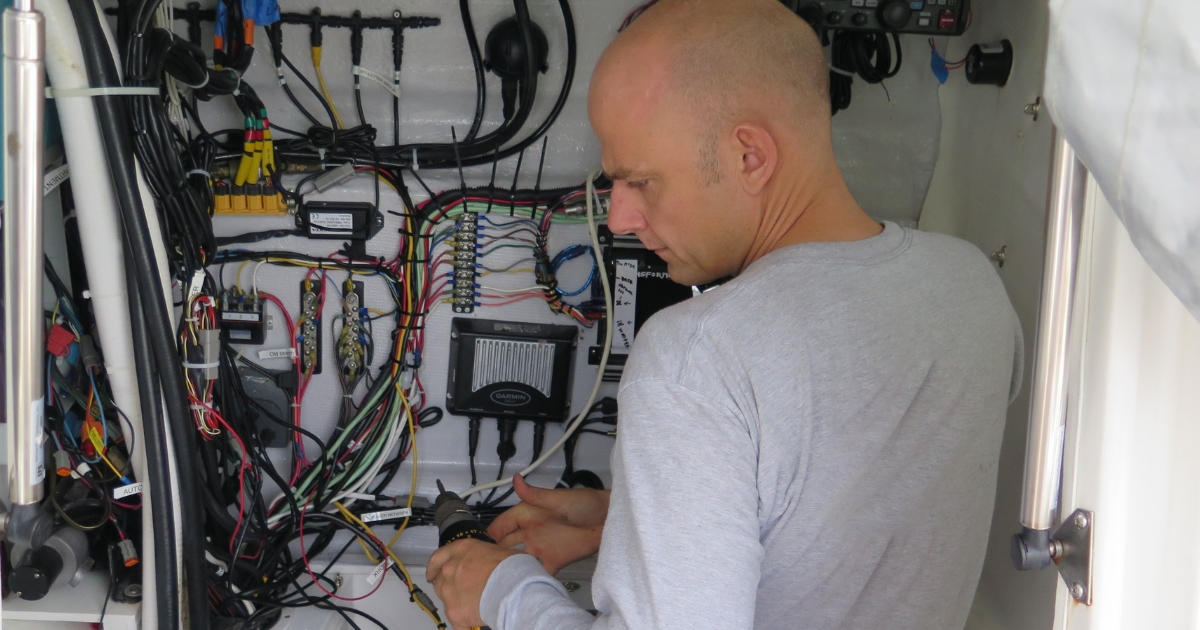
Which entry level qualifications will I need?
As for all crew working on board, to be a superyacht engineer you need to have completed your STCW basic safety training (a five day course) and have a valid ENG1 medical certificate. Assuming you follow the standard route into engineering, once you have both the STCW and ENG1, you will need to complete the AEC 1 and 2.
AEC 1 provides students with basic theoretical knowledge, as well as some practical hands-on experience of diesel engines/systems to enable you to meet the MCA’s requirements. This covers the basic operation of engines and their support systems, as well as checks and fault finding.
You can then progress to the AEC 2 course, which covers topics as diverse as refrigeration, legislation (books and records), maintenance systems and techniques, lifting and slinging, safe systems of work, electrical distribution, basic hydraulic systems, fresh water and sewage systems, and much more.
What are the different roles within the engineering pathway?
Although this varies depending on the needs of the individual vessel, the engineering roles on board a superyacht typically range from fourth engineer through to third, second, first and then chief engineer. The key difference between these positions is found in the level of leadership and management responsibility attributed to each role.
Fourth engineer As the most junior engineering officer on board, the fourth engineer is still learning the ropes, and you will need to demonstrate a willingness to learn and get stuck in straight away in order to succeed in this role. Chances are, you will be splitting your time between phases at sea and phases ashore to attend the courses necessary to progress in your career. Third engineer With responsibilities varying from yacht to yacht, the duties of a third engineer are diverse and could include the maintenance of lifeboats, tenders, toys, jet skis and deck equipment such as winches, davits, and hatchways, as well as interior maintenance. Second engineer Typically the deputy to the chief engineer, the 2nd engineer has responsibility for the maintenance of the engine room, often taking on more challenging repair and maintenance tasks, as well as supervising more junior crew members.
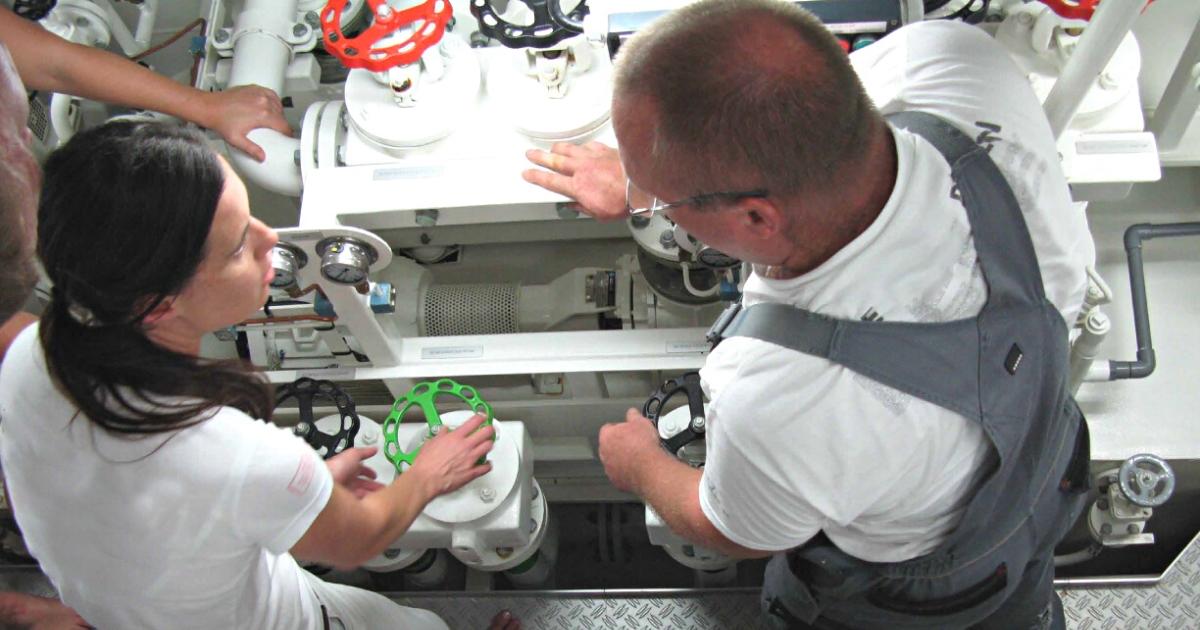
Chief engineer The chief engineer (often a sole engineer on smaller yachts), commands all engineering operations on board and will act as the senior advisor to the captain on all issues relating to the condition and serviceability of the engines, propulsion, ancillaries and interior systems.
Working closely with the captain to always ensure onboard safety, chief engineers are also responsible for maintaining compliance of the yacht’s systems and equipment with relevant laws and regulations to ensure that the vessel passes flag state and other surveys and inspections.
How do I rise up the ranks?
Progressing through the ranks requires you to apply for a certificate of competency (CoC) for each stage.
In order to qualify for the relevant CoC, there are various requirements for each role. These include attaining a certain amount of seagoing service, passing selected examinations (oral and written), and holding the applicable ancillary and safety course certificates. To discover the level of experience and exact qualifications required for each individual CoC, as well as other useful courses and qualifications to help you stand out from the crowd, visit the Academy by Ephemeris website and explore the engineering pathways .
A spokesperson from Academy by Ephemeris highlights: “The yachting industry is always in need of fantastic, tech savvy engineers. It is a fulfilling, challenging and stimulating career, and we are delighted to have helped scores of enthusiastic candidates to achieve their career goals by following the guidance laid out on our platform.”

Post your comment
You cannot post comments until you have logged in.
No one has commented on this page yet.
RSS feed for comments on this page | RSS feed for all comments
Search articles with keywords
How Do I Become A Yacht Engineer – Qualifications and Requirements
If you are looking for a career as a yacht engineer, we’ve compiled a breakdown of the qualifications and requirements needed to start out, insight into the job day-to-day and how to effectively land your dream position.
What Does a Yacht Engineer do?
Depending on type, size and usage of the yacht, the Engineering department (be that a Sole Engineer or a department of 6 or more Engineers) are responsible for the operation, maintenance and repair of all mechanical, electrical, electronic, hydraulic, pneumatic and in some cases, structural systems and appendages found on board a modern yacht and superyacht.
Skills Needed to be a Successful Yacht Engineer
The role requires a keen eye for planning and organisation, as planned maintenance (carrying out preventative and explorative maintenance before failures occur) is a very important aspect in modern marine engineering. Skills in project management, resource allocation and time management are very desirable in addition to extensive and diverse technical ability. Many yachts employ software programs to aid a methodical approach to planned and preventative maintenance and to record failures and repairs as they occur as well as keeping an accurate inventory of spares held on board. Being able to efficiently use such software programs efficiently would be highly advantageous. Examples of these asset management programs are AMOS and IDEA .
Challenges as an Engineer Onboard a Yacht
Engineering on a superyacht has particular challenges as some yachts (particularly charter yachts) can be very busy, meaning a very fast paced and demanding environment. High expectations from owners and guests in regards to service and entertainment also puts a keen onus on engineering departments to keep all systems working to minimise or eliminate down time and negative impacts on the itinerary. Of course, when the yacht is at sea, many of these systems are safety critical and break downs and failures offshore bring a whole new set of challenges and risks.
Which qualifications do I need to get in to superyacht engineering?
There are really two main entry routes in to yacht and superyacht engineering which follow two distinct certification pathways – entering from commercial shipping, or working through yacht-based certification routes.
Commercial Shipping Route of Training for Yacht Engineering
The Commercial Shipping route most commonly begins with a sponsored cadetship with a shipping company working in partnership with maritime training provider. Candidates must apply to one of a number of cadetship schemes and if accepted will undertake usually 3 years of study and work experience on the sponsoring companies’ vessels, culminating very often in the Officer of the Watch (Engineering) or ‘EOOW’ ticket and usually either an HND or BSc Degree in Marine Engineering or similar.
Once the EOOW certificate is in hand, candidates can be considered suitably qualified and experienced for junior engineering officer roles on large yachts. A common first yachting job for EOOW qualified candidates is 3 rd Engineer. The main advantage of a cadetship is that seatime is gained quickly and on vessels over 3000 GT, allows for a ticket which is ‘unlimited’ by tonnage as all yacht engineering certificates are. This opens the door to working on the world’s largest mega and superyachts.
Also, the sponsoring company pays for all courses and examinations which would be extremely expensive if self-sponsored, and very often a small training bursary is paid on top (some as much as €11,000 / year). The biggest disadvantage is that candidates who ultimately want to work on superyachts will have to commit to different types of vessel for the duration of the cadetship – these are likely to be chemical tankers or containerships, but most of the large luxury cruise ship companies also offer cadetships which is in some ways closer to the yachting industry. One facilitator of maritime cadetships is the Warsash Maritime Academy – see here .
Yacht Certification Route of Training for Engineering
This route is made up of 6 key certificates:
The Approved Engine Course (AEC) – often seen as the base-minimum for superyacht engineers who wish to work on yachts over 24m LOA. Usually a 4-day course covering the theory of compression-ignition (diesel) engines and includes a large amount of practical workshops. View the full syllabus for the Approved Engine Course (AEC) . One common provider of AEC courses is Bluewater Yachting in Antibes – see here .
The Marine Engine Operators Licence (MEOL) – This is the first certificate in the yacht route that requires sea service, specific shore based learning and an oral exam. View further details on MSN 1859 here .
Y4 Engineer – The first of what is commonly referred to as the ‘Y Tickets’ – Y4 allows engineers to work as Chief Engineer on yachts between 200 and 500GT and up to 1500Kw in propulsive power.
Y3 Engineer – Allows engineers to work as Chief Engineer on yachts up to 3000GT and up to 3000KW in propulsive power.
Y2 Engineer – Allows engineers to work as Chief Engineer on yachts up to 3000GT and up to 6000KW in propulsive power.
Y1 Engineer – Allows engineers to work as Chief Engineer on yachts up to 3000GT and up to 9000KW in propulsive power.
The Maritime and Coastguard Agency have simplified the Y ticket structure however, and page 19 of MIN 524 provides a simple conversion table from Y tickets to the new standard – Small Vessel (or SV) tickets.
Some course providers are now offering yachting cadetships – one example is this one provided by the UKSA in Cowes on the Isle of Wight .
How are Engineering Departments Structured on Yachts?
Engineering departments vary widely according to the type, size and usage of the yacht in question, but most large yachts will have some or all of the following roles on board:
Chief Engineer (or Sole Engineer on smaller yachts with only one engineer) The Chief Engineer is in overall command of all Engineering operations on board and is the senior advisor to the Captain on all matters related to the condition and serviceability of the yachts engines, propulsion, ancillaries and hotel systems. Although Captains always retain supreme responsibility for the safety of the vessel, all the best captains will work very closely with the Chief Engineer and take heed of any advice and requests they make – after all, they are highly trained, experienced and knowledgeable subject matter experts. Chief Engineers are responsible for ensuring that the Yacht is in all respects compliant with the relevant laws and regulations governing the serviceability of the yachts systems and equipment. They are pivotal in ensuring the yacht passes any relevant flag state, port state or P&I club surveys and inspections.
1 st Engineer Some of the very largest yachts afloat employ a 1 st Engineer similar to those employed on Cruise Ships. If a 1 st Engineer is employed, they will take operational (day-to-day) command of the engineering team, supervising engineering tasks and allocating work as appropriate. This allows the Chief Engineer to concentrate on the large amount of paperwork and business management necessary on board a very large yacht.
2 nd Engineer The more common understudy to the Chief Engineer, the 2 nd Engineer often has responsibility for Engine Room maintenance and will take on many of the more challenging maintenance and repair tasks as required. The 2 nd Engineer acts as a supervisor for more junior crew, and in some cases will be able to deputise for the Chief Engineer if required.
3 rd Engineer The 3 rd Engineer will have specific duties, which may include maintenance of the ship’s lifeboats, tenders, jet skis, toys and deck equipment like winches, davits and hatchways. Very often 3 rd s are responsible for interior maintenance. Again, areas of responsibility vary from yacht to yacht. 3 rd Engineers are often focused on gaining the requisite experience and ‘seatime’ to progress to 2 nd Engineer.
4 th Engineer The most junior engineering officer on board, the 4 th is very often new to Marine Engineering and is learning the trade. 4 th Engineers are often engaged in structured learning programs, or at least splitting their time between phases at sea learning on the job with phases ashore attending courses. Again, this can vary widely across the industry.
Motorman A junior, but important role found almost exclusively on large yachts in excess of around 100m, the motorman (not gender-specific!) is responsible for the operation and basic maintenance of the yachts main engines and engine room systems. They may assist in starting and stopping large engines and generators, operating switch panels under the supervision of an officer or senior engineer and reporting anything unusual. Engine room cleanliness and order will be an important part of the role.
Wiper / Oiler On the largest yachts, especially those operating medium speed diesels or older conventional ship propulsion technology, a wiper and oiler may be employed in addition to the above with a focused role keeping engines and machinery spaces clean, and keeping greased bearings fed or keeping open rockers oiled etc. An ability to access confined spaces is often useful, and a keen eye for cleanliness in bilges and bunded tanks etc is often a must.
How To Find a Job as a Superyacht Engineer
Once you have the relevant qualifications, then comes the time to start looking for your first position. Of course, word of mouth and personal connections made through training are a fantastic way to gain knowledge on current positions available however, also consider the following:
Dockwalking – travel to one of the main superyacht hubs like Palma, Antibes or La Ciotet and walk the docks asking yachts if they need engineering crew. Make sure you take a proper CV, written references and go well presented. Be polite and be prepared for a good deal of face-to-face rejection, however don’t take it personally.
Use a reputable crew agent such as wilsonhalligan who is MLC 2006 compliant, vastly experienced and a well respected crew recruitment agency in the industry who does the dock walking for you!
We’re here to help
Elan House, 5a Little Park Farm Road, Fareham, Hampshire PO15 5SJ
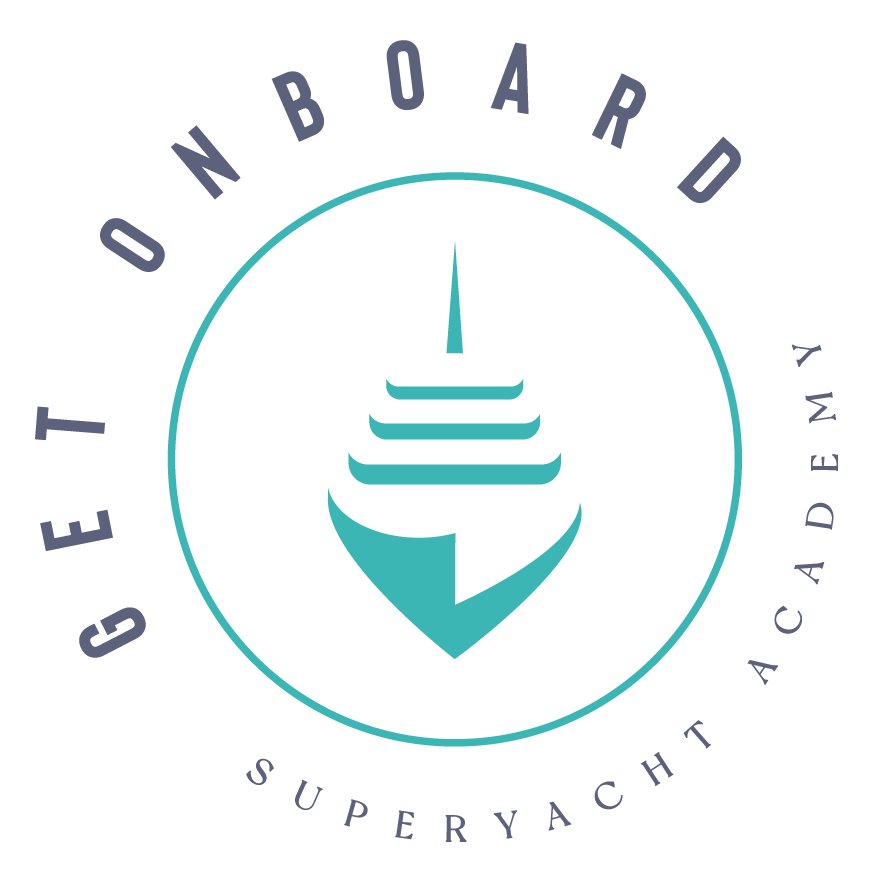
Get Onboard
Superyacht Training

How To Become A Superyacht Engineer
Thinking about pursuing a career as a superyacht engineer we show you how….
We frequently receive emails from students asking us, “How do I become a Superyacht Engineer?” “Are my trade skills transferable?” “What yacht training must I complete?” and “ What qualifi cations do I need? “. In this article, we break down these questions and explain exactly what steps you need to follow in order to become a super yacht engineer.
What is a Superyacht Engineer?
The crucial part of any yacht engineer job description is maintaining the mechanical and electrical operations of the yacht. The duties of an engineer range from maintaining and servicing generators, jet skis and powerboats to replacing oil filters, repairing water makers, monitoring air conditioning, AV, IT and even unblocking toilets. Whether you are new to the industry, or have worked on land as a plumber, carpenter or tradesman, anyone can become a super yacht engineer, provided they have completed the necessary courses.
The Engineering Department onboard a super yacht is quickly becoming one of the most desirable departments to work due to the rotation packages as well as the transferable skills land-based skills such as plumbing and carpentry . Senior Engineers are highly respected and are of a similar rank to the Captain as the yacht is unable to manoeuvre without them.
What are the Superyacht Engineering Courses and Qualifications?
Yacht engineering qualifications were introduced in February 2001 to provide an industry standard system of certification. The system allows all those who wish to pursue engineering careers to do so, no matter what their previous training is.
The Maritime and Coastguard Agency (MCA), have set out the basic course progression you will need to follow in order to work your way up from a Junior Engineer, to Chief Engineer onboard. This involves completing the AEC , MEOL and Yacht 4, 3, 2 and 1 qualifications.
The qualifications you require include:
A mechanical, diesel or electrical background
Strong project management skills
Inventory maintenance experience
Understanding of different softwares
The Approved Engine Course (AEC) – the base minimum for superyacht engineers who wish to work on yachts over 24m LOA
The Marine Engine Operators Licence (MEOL)
Depending on the size of yacht you want to work on, you may need the following licenses.
– Yachts <200GT with up to 1500Kw in propulsive power:
Small Vessel Second Engineer (formerly Y4)
– Yachts <500GT with up to 3000Kw in propulsive power:
Small Vessel Chief Engineer (formerly Y3)
– Yachts <3000GT with up to 9000Kw in propulsive power:
Small Vessel Chief Engineer (formerly Y1/2)
or Officer of the Watch (Engineering) – usually gained from the commercial shipping industry
– Unlimited license:
Engineer Officer of the Watch – Unlimited
What is a typical yacht engineer salary?
Starting out as a 3rd or junior engineer, you can expect to earn anywhere from $3,000 to $6,500 per month, and as you move up the ranks to 2nd engineer this increases from $5,000 to $8,000.
In the top position, a chief yacht engineer salary can be anywhere between $8,500 to $13,500, depending on the size of the yacht, so if you want the big bucks then the engineering department is the way forward!
There is no average yacht engineer salary, with roles varying so much from yacht to yacht, however these figures are a guideline for what you can expect to earn. It is worth noting that obtaining your engineering qualifications takes time and is an expensive process, so be sure you are ready to commit to long hours of studying ahead. Check out our article on yachting salaries for more information.
What are the super yacht training package do you offer?
Once you have completed your STCW course and other basic safety training, you can look to expand your skill set to work on board in the super yacht industry.
We have put together an extensive Superyacht Engineering training program which is an ideal entry level introduction for those seeking to work on a yacht as an Engineer. Due to the longevity of the engineering department onboard, this is an excellent avenue to explore if you are looking for real career progression, rather than a gap year experience.
- Proficiency in Designated Security Duties (PDSD)
- RYA Powerboat Level 2
MCA Approved Engine Course (AEC1)
Interested in learning more?
If you are thinking about starting out as an engineer, you can read more about our Superyacht Engineer Course package.
You can complete these courses with us at Get Onboard Superyacht Academy in Cape Town. If you are interested in learning more, why not speak to one of our expert consultants who will happily answer any additional questions you may have.
Needing more?
Error: Contact form not found.
RYA/MCA Online
1. what are the basic requirements you need to be eligible to work in the yachting industry, 2. what is the stcw and why do i need it, 3. what is the eng1 medical certificate, 4. what land based experience will help me find a super yacht job, 5. what are the different departments onboard, 6. what crew training is required for me to work as a junior deckhand.
- Yachtmaster/Coastal Skipper Theory
- Yachtmaster/Coastal Practical
- Specialist Super Yacht Training Course (Deck Hand Training Course)
- RYA Power Boat Level II
- RYA Personal Watercraft Course
- RYA Competent Crew Certificate
- RYA Day Skipper Theory and Practical Certificates
- VHF Radio Operator’s License
7. What crew training is required for me to work as a junior stewardess?
- Stewardess Course
- MCA Food Safety Level 2
8. How do I book my training courses?
9. how do i get my first job on a yacht, 10. are these courses worth it, or am i just wasting my money, 11. will i get hired for my first job from south africa, 12. what is daywork, 13. what are the best locations to get a yacht job, 14. how much can a motor yacht stewardess or deckhand earn, 15. what are the negatives of working on a yacht, 16. what are the positives of working on a yacht, 17. is working on a super yacht for everyone, 18. what is the minimum age to work on a yacht, 19. is accommodation provided when i am completing my yacht training in cape town.
- +44 151 632 4000 [email protected]
- 86a Market Street, Hoylake Wirral, CH47 3BD, UK
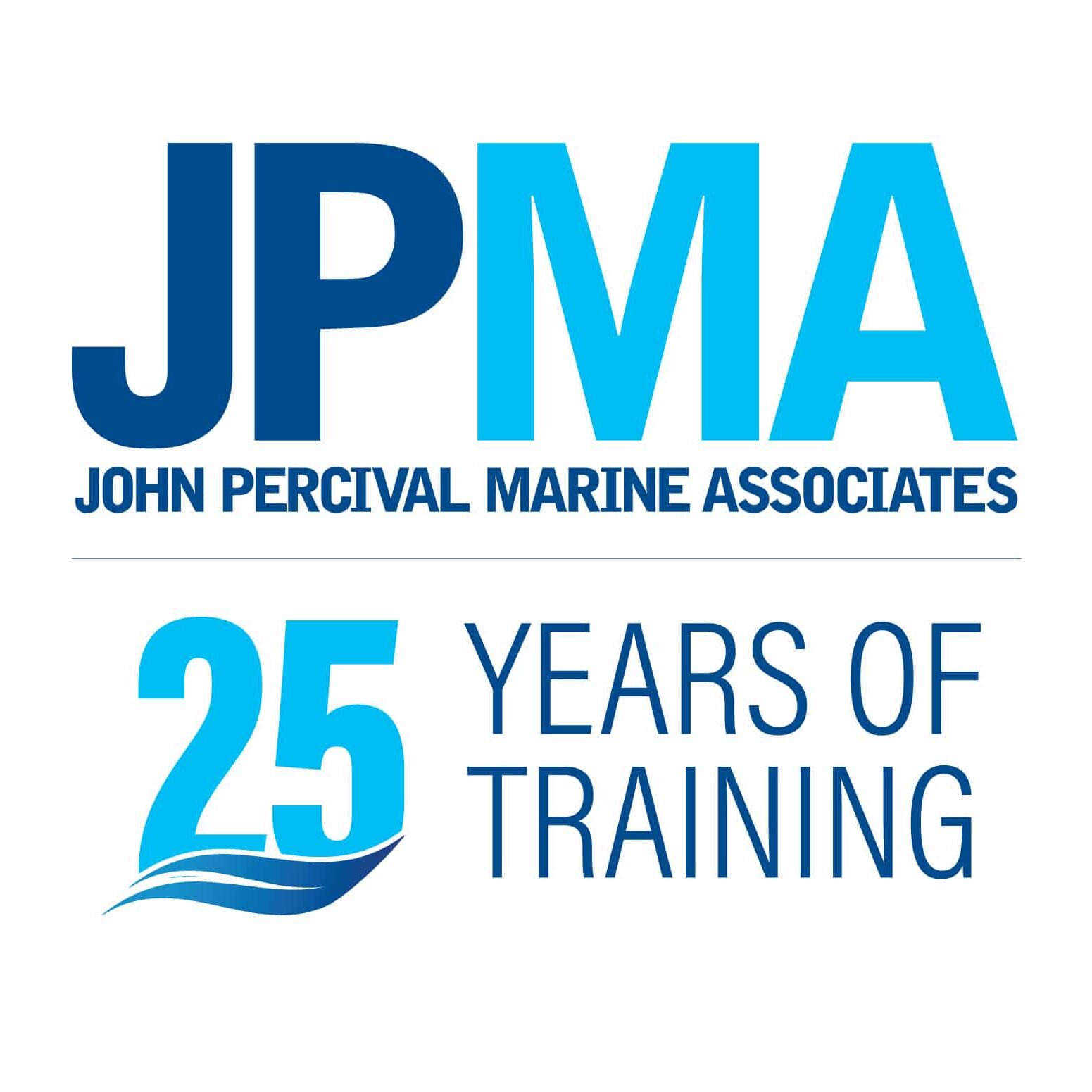
JPMA & Hoylake Sailing School
(john percival marine associates), what are the requirements for a y4 or y3 coc, the yacht engineer coc route is being phased out., yacht noe applications are no longer being accepted by the mca., if you already hold a yacht engineer noe, it will remain valid for use until its expiry date. jpma continue to offer oral prep courses for the yacht oral exams, your written modules must be in date at the time of your coc application..
In order to gain a Y4 or Y3 CoC, you will need to do some classroom training, some yacht and sea service, and finally an oral exam.
Depending on the amount of yacht and actual sea service you have accumulated, you may be able to go straight to Y3 level. In order to be assessed as to the level at which you may enter the yachting certification process, you must download and submit the Letter of Initial Assessment application form
NOTE: Updating Training for CoC applications- anyone serving on board ship, who holds any of the following certificates must, as of 1st January 2017, have documentary evidence of either completing the training course or updating training within the last 5 years:
- Personal Survival Techniques
- Proficiency in Survival Craft & Rescue Boats (CPSC & RB)
- Proficiency in Fast Rescue Boats (PFRB)
- Basic Fire Fighting
- Advanced Fire Fighting
Chief Engineer Certificate of Competency – (Yacht 4)
The courses that you must undertake for Y4 are:
CPSC&RB/Advanced Sea Survival certificate¹
Advanced Fire Fighting certificate
Proficiency in Medical First Aid Aboard Ship
Skills Test certificate (exemption may be given under certain circumstances)
SV Marine Diesel Engineering certificate²
SV Auxiliary Equipment I certificate²
SV Operational Procedures, Basic Hotel Services & Ship Construction certificate²
Human Element Leadership & Management (Operational) certificate
ENG1 Medical certificate
If you are yet to receive any of these certificates, you can still apply for the NoE, but you will need to submit the certificates to the MCA after you have undertaken your oral exam
¹ NOTE: if you submit an Advanced Sea Survival certificate, your CoC will be endorsed as follows: “not for use on ships equipped with davit launched lifeboats”
² NOTE: MIN 594 details the new requirements for obtaining a Y4 CoC. After 31st July 2018 the Y4 modules will cease to exist. You must therefore undertake the SV versions of all three modules when applying for a Y4 CoC. If you have already completed the Y4 modules these are still valid for 3 years from the date on your pass certificate, and can be used towards your Y4 CoC. If you need to re-sit a Y4 written exam after 31st July, you may sit the SV version of the exam whilst holding a Yacht course completion certificate – you do not have to sit the SV version of the module again.
In all cases, you must undertake the MCA oral for Y4.
You may continue along the Y route, but when moving on to Y3, you must sit the SV Auxiliary Equipment II module in addition to the requirements detailed in MSN 1859.
Required Service:
If you hold MEOL, you need to have 12 months service as a yacht engineer, on yachts of 350kW or more in propulsion power, which must include at least 6 months actual sea service, whilst holding the MEOL(Y) or MEOL (MN)
if you are going straight for the Y4 CoC, you need to prove 42 months service as a yacht engineer, with a minimum of 12 months on yachts of 350kW or more in propulsion power, which must include at least 6 months actual sea service
6 months service as a yacht engineer, on yachts of 350kW or more in propulsion power, whilst holding a MN Senior Marine Engine Operator licence (SMEOL), which must include at least 3 months actual sea service
Chief Engineer Certificate of Competency – (Yacht 3) (Chief Engineer “Service Endorsement”)
The courses that you must undertake for Y3 are:
Y3 Chief Engineer Statutory & Operational Requirements
SV Auxiliary Equipment II certificate (if you completed SV Aux Equipment I in lieu of Y4 Aux Equipment – see note 2 above)
Human Element Leadership & Management (Operational) certificate (if this wasn’t submitted with your Y4 CoC application)
If you hold Y4, you must prove 9 months service as a yacht engineer, o n yachts of 350kW or more in propulsion power, which must include at least 3 months actual sea service, whilst holding a Chief Engineer certificate of competency (Yacht 4).
if you’re going straight for the Y3 CoC, you must prove 51 Months service as a yacht engineer, of which at least 21 months must be o n yachts of 350kW or more in propulsion power, of which 9 months must be actual sea service.
if you hold any Merchant Navy engineering qualifications, flow charts on pages 22, 23 & 24 of MSN 1859 show the entry routes for this CoC
Information about Service for both Y4 & Y3: The qualifying yacht service must be performed in the engineering department. In the case of a dual role Engine⁄Deck candidate, half of the service is counted.
Yacht service is counted as the time spent on the vessel and excludes leave and other non-working time. At least 6 months of the yacht service must be within the 5 years preceding the application.
Yard & refitting time is accepted as yacht service, but is limited to 90 days. This cannot be counted towards actual sea service.
Actual sea service must be in the engine department onboard yachts, and is only applicable when you are actually at sea, on passage. A minimum of 4 hours or working duty in 24 hours would count as 1 full day of actual service.
Sea Service Verification Process – please click here to read about new regulations.
Applying for an NoE:
To do the final oral exam for Y4 or Y3, you will need a Notice of Eligibility. This document is issued once the MCA have assessed your eligibility, and an oral exam cannot be booked until the NoE is issued.
Your service needs to be proved with 2 forms of evidence for each vessel on which you are claiming service time. Usually a Testimonial and a Certificate of Discharge. If you have a discharge book, this can be used with a testimonial for each vessel, or if you are a member of the PYA they will attest your PYA logbook.
You must send a form of ID with your application. You can send a copy of your passport, signed by your Captain and with their CoC number noted, but you can also send any form of National ID – birth certificate or Discharge Book are usually easier to cope without!
It should be noted that written exam pass certificates have a validity of only three years. If your module pass certificates are more than 3 years old when you apply for an NoE you will have to submit new pass certificates to the MCA before they will issue an NoE.
This is all laid out in MSN 1859 (the Engineer testimonial and Certificate of Discharge can be found as an annex of the M Notice on pages 28, 29 & 30)
Update to Electronic NoE application process & online oral exams
You will need to download the NoE application form . You must complete the form and send all of your original certificates and testimonials to the MCA. The NoE will be processed in about 28 days. Once the NoE is issued you are deemed eligible to take the oral exam.
JPMA offers oral preparation courses for the Y4 & Y3 oral exams. Click here for details.
Lighthouse careers
- [email protected]
- +33 451 088 780
- Calculate your salary

Yacht engineer salary and job description
According to an article published in 2021 from MTU, engineering jobs are once again one of the highest paying careers on the market, and for great reason!
Engineers endure years of intense studying to achieve their degree, making them among the most responsible and hard-working individuals in the job market. One of the many benefits of an engineering career is that you are not confined to a cubical setting. Have you ever considered working on a yacht?
But what does a yacht engineer do, and how much does a yacht engineer make?
Guests board yachts to take them to exciting destinations and see corners of the world that others only dream of. Read on to learn why yacht engineers are one of the most sought after positions on the market today!
You can also check out this link to skip ahead and view some of the available yacht engineering positions available in your area!
Yacht Engineer positions
Before determining how much a yacht engineer makes, it is necessary to break down and understand the qualifications and responsibilities of the different types of engineers.
Also, it is crucial to remember that the pay of each yacht engineer position will vary based on several factors, including vessel and engine size, itinerary other requirements linked to the safe manning of the yacht.
We aren’t really used to this, right? Many career fields on land have general pay scales that you can use to compare positions, say, in different cities or with competing companies.
At sea, the numerous factors involved make it difficult to pinpoint an exact yacht engineer salary that will apply to every position. However, this article will provide you with the latest figures and research to give you an accurate idea of what to expect.
This way, you can plug in your own numbers and have a reasonably precise idea of how much dough you’ll be reeling in per month.
Without further ado, let’s jump right into the most common yacht engineering positions you would find sized on any vessel.
Chief Engineer
If the captain of a yacht is considered the brain, think of the Chief Engineer as the heart.
Much like our brains, Captains ensure that every aspect of the operation is working seamlessly and coherently to ensure smooth sailing.
Similar to how brains need blood and oxygen to ensure smooth running, Captains need their Chief Engineer to help oversee mechanical operations and keep the vessel running in tip-top shape.
The Chief Engineer reports directly to the Captain and, depending on the yacht size may also lead his team of engineers below. Regardless of the size, it is the Chief Engineer’s responsibility to ensure the vessel is up to industry standards in regards to all maritime regulations.
One critical aspect of the Chief Engineer’s job is to ensure that the vessel will pass all of the necessary flag and port inspections. To learn more about what to expect, click here and view the Ultimate Guide to PSC Inspections on Ships!
A failing grade may result in the detainment of the vessel, which is probably one of the worst things that could happen, especially with guests on board who are dreaming of their next destination. Engineers must be able to see problems before they arise. Proactivity is key!
The Chief Engineer aboard a yacht helps to keep things running efficiently, and on smaller vessels, their responsibilities will also include those of the Second Engineer.
Second Engineer
As their name suggests, Second Engineers are typically second in command. They report directly to the Chief Engineer. In certain instances, it may be necessary for them to step in as acting or temporary Chief Engineer. They must be familiar with and able to adequately perform the same duties.
On larger vessels, the Second Engineer may be the main supervisor for any Junior crew members under them, such as a Third or Fourth Engineer.
The day-to-day requirements of Second Engineers can vary, so this position is full of excitement and new schedules!
Therefore, all Engineers must be flexible. They could spend hours working in the engine room on one day, then spend all day the next helping out with difficult guest situations.
Yacht Engineers spend the majority of their day working to prevent issues before they happen. Active thinkers who can quickly assess difficult situations to find the best solution possible are great candidates for yacht engineering positions.
Both Chief and Second Engineers could be hired for permanent positions, on a rotational contract, or even on a temporary basis to cover for leave or a crossing or yard period for example. But what does that mean for your salary?
How Does a Rotational Contract Affect Pay?
In short, you will be paid less if you are in a rotating position as opposed to being permanently hired in the same role. However, many crew members would argue that the benefits of being on a rotation far outweigh the difference in pay.
It’s no surprise that working on a yacht can provide its fair share of challenges, especially in regards to one’s personal life. Being out at sea decreases your time with family and friends.
Rotational contracts are typically 2:2, or 3:3meaning one month at sea then one month on land (or three months at sea, etc). Increasingly we are seeing 10 weeks on/off rotation so that crew are not always working the same months of each year. This is often the preferred option because it provides you with the best of both worlds: you’re able to have a well-paid job, while also cherishing irreplaceable family time.
Most yachts over 50m now offer full rotations for the chief engineer, and increasing for the second engineer positions. This is good news for the industry, as the engineers can transition entirely behind the scenes. Guests aboard the yacht will have no idea that the new team is in place, and that is crucial to a smooth transition!
This rotation also dramatically decreases the number of crewmembers who burnout from being at sea for so long. In the long run, rotating crews are often beneficial because they lessen the need to go through the hiring process every six to twelve months if permanent crew members decide to head back to land. This can be costly in every sense of the word.
How Much Does a Yacht Engineer Make?
Yacht engineer salary grids.
Above 50m, the Chief Engineer contracts are generally Rotational . The breakdown of their salary per month is below:
On yachts above 50m, crew may be offered Permanent Second Engineer or Rotational Second Engineers contracts. The average monthly salary for yachts from 50-90m for Permanent Second Engineers is as follows:
Finally, the average monthly salary for Rotational Second Engineers on vessels above 60m is as follows:
As you can see, rotational positions can be paid a similar salary to their permanent counterparts, however this will always be dependent on the certificate requirements and specific yacht and itinerary information. To learn more about this unique option, check out this informational article!
Necessary Background Experience
The ideal Yacht Engineer should have experience working on a charter at sea. Similar sized vessels to the open position will probably be preferred and set candidates apart from the competition.
They ought to display high levels of attention to detail and problem solving, as well as being able to plan and maintain an organized and efficient workspace.
Being prepared for any possible scenario is the backbone of a successful yacht engineer. Situations often arise that will need to be handled with poise and efficiency, and the best applicant will have experience keeping a level-head in these tough scenarios.
Again, a history of leading proactively looks great on the job application.
There are various pathways open to become a marine engineer. You can either complete an engineering cadetship through your national Martime School or go down the more specific yachting career path. In this case the MCA in the UK and the USCG in the USA are the better known ones.
Need a Yacht Engineer?
Whether you are inquiring about a position for yourself or hoping to fill a position on your yacht, you may have further questions, for example, just how much does a yacht engineer make?.
Don’t worry, you’re not alone!
Lighthouse Careers provides you with the tools and assistance you need to put together a crew you will be proud of. Take a few moments out of your day to submit an inquiry , and hear back from talented professionals ready to step on board!
We also make it easy to find your dream a position aboard a yacht. Register your application with us so that we can match you to employers and yachts that fit your needs!
When you’re ready, we’re here waiting to help you succeed!
Recent Posts
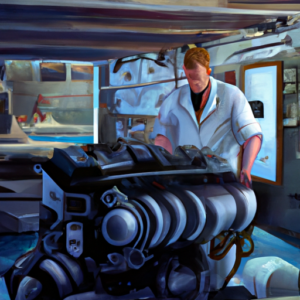
What Makes A Good Yacht Engineer?

New Year New You – Tips for Keeping a Healthy Lifestyle Onboard

R is for Rotation

5 Essential Qualities of a Successful Yacht Yoga Instructor

The Importance of Menu Planning for yacht chefs

5 Qualities to Look for When Hiring a Yacht Masseuse/Beautician

How to Find the Right Purser a luxury Yacht: Tips for Hiring

Moving up too Quickly……
Our mission.
We strive to be the first-choice recruitment service provider for both clients and candidates alike. Our goal is to make the recruitment process as smooth and seamless as possible

- Browse jobs
- Affiliates/PCCP
- Looking for crew
- Looking for staff
- Mission Statement
- Blog articles
- Baya, Building 7 400 Avenue Roumanille Village d’Entreprises Green Side BP 309 06906 Sophia‑Antipolis
© 2023. Lighthouse-careers

- Charter & Brokerage
- Yacht Design & New Builds
- Tenders & Toys
- Superyacht Events Calendar
- Career & Training
- Departments
- Superyacht Crew Finances
- Sustainability
- Shipyards and Marinas
- Health & Wellbeing
- Polar Region
- Our Services
- Meet the Team
How to Become A Yacht Engineer
.png)
Are you looking for a career as a yacht engineer?
Wilsonhalligan have compiled a breakdown of the qualifications and requirements needed to start out as a yacht engineer. As well as insight into the job day-to-day and how to effectively land your dream position.
What does a Yacht Engineer do?
It depends on the type, size and usage of the yacht. But, the Engineering department are responsible for the operation, maintenance and repair of all:
- electricals
- electronics
- as well as in some cases, structural systems and appendages found on board a modern yacht and superyacht.
Skills needed to be a successful Yacht Engineer:
The role requires a keen eye for planning and organisation. Planned maintenance (carrying out preventative and explorative maintenance before failures occur) is a very important aspect in modern marine engineering. Skills in project management, resource allocation and time management are very desirable, in addition to extensive and diverse technical ability. Many yachts employ software programmers to aid a methodical approach to planned and preventative maintenance, as well as to record failures and repairs as they occur. As well as keeping an accurate inventory of spares held on board. Being able to efficiently use such software programs efficiently would be highly advantageous. Examples of these asset management programs are AMOS and IDEA .
Challenges as an Engineer Onboard a Yacht:
Engineering on a superyacht has particular challenges. Some yachts (particularly charter yachts) can be very busy, meaning a very fast paced and demanding environment. High expectations from owners and guests in regards to service and entertainment also puts a keen onus on engineering departments. They are expected to keep all systems working to minimise or eliminate down time and negative impacts on the itinerary. Of course, when the yacht is at sea, many of these systems are safety critical. Break downs and failures offshore bring a whole new set of challenges and risks.
Which qualifications do I need to get in to Superyacht engineering?
There are really two main entry routes in to yacht and superyacht engineering. They follow two distinct certification pathways – entering from commercial shipping, or working through yacht-based certification routes.
Firstly, the Commercial Shipping Route of Training for Yacht Engineering:
The Commercial Shipping route most commonly begins with a sponsored cadetship with a shipping company. Who, are working in partnership with maritime training providers. Candidates must apply to one of a number of cadetship schemes. And, if accepted will undertake usually 3 years of study and work experience on the sponsoring companies’ vessels. Culminating very often in the Officer of the Watch (Engineering) or ‘EOOW’ ticket. And, usually either an HND or BSc Degree in Marine Engineering or similar.
Once the EOOW certificate is in hand, candidates can be considered suitably qualified. As well as experienced for junior engineering officer roles on large yachts. A common first yachting job for EOOW qualified candidates is 3 rd Engineer. The main advantage of a cadetship is that seatime is gained quickly and on vessels over 3000 GT. It also allows for a ticket which is ‘unlimited’ by tonnage as all yacht engineering certificates are. This opens the door to working on the world’s largest mega and superyachts.
Also, the sponsoring company pays for all courses and examinations which would be extremely expensive if self-sponsored. And, very often a small training bursary is paid on top (some as much as €11,000 / year). The biggest disadvantage is that candidates will have to commit to different types of vessels during the cadetship. These are likely to be chemical tankers or containerships. But most of the large luxury cruise ship companies also offer cadetships. Which, is in some ways closer to the yachting industry. One facilitator of maritime cadetships is the Warsash Maritime Academy – see here .
Secondly, the Yacht Certification Route of Training for Engineering:
This route is made up of 6 key certificates:
The Approved Engine Course (AEC). Often seen as the base-minimum for superyacht engineers who wish to work on yachts over 24m LOA. Usually a 4-day course covering the theory of compression-ignition (diesel) engines and includes a large amount of practical workshops. View the full syllabus for the Approved Engine Course (AEC) . One common provider of AEC courses is Bluewater Yachting in Antibes – see here .
The Marine Engine Operators Licence (MEOL). This is the first certificate in the yacht route that requires sea service, specific shore based learning and an oral exam. View further details on MSN 1859 here .
Y4 Engineer. The first of what is commonly referred to as the ‘Y Tickets’. Y4 allows engineers to work as Chief Engineer on yachts between 200 and 500GT. And, up to 1500Kw in propulsive power.
Y3 Engineer. Allows engineers to work as Chief Engineer on yachts up to 3000GT and up to 3000KW in propulsive power.
Y2 Engineer. Allows engineers to work as Chief Engineer on yachts up to 3000GT and up to 6000KW in propulsive power.
Y1 Engineer. Allows engineers to work as Chief Engineer on yachts up to 3000GT and up to 9000KW in propulsive power.
The Maritime and Coastguard Agency have simplified the Y ticket structure however, and page 19 of MIN 524 provides a simple conversion table from Y tickets to the new standard – Small Vessel (or SV) tickets.
Some course providers are now offering yachting cadetships – one example is this one provided by the UKSA in Cowes on the Isle of Wight .
How To Find a Job as a Superyacht Engineer
Once you have the relevant qualifications, then comes the time to start looking for your first position. Of course, word of mouth and personal connections made through training are a fantastic way to gain knowledge on current positions available however, also consider the following:
Dockwalking – travel to one of the main Superyacht hubs like Palma, Antibes or La Ciotat and walk the docks asking yachts if they need engineering crew. You should take a proper CV , references , and make sure you are well – presented. Be polite and prepare yourself for some face-to-face rejection . However, don ‘ t take things personally .
Use a reputable crew agent such as wilsonhalligan who are MLC 2006 compliant, vastly experienced and a well respected crew recruitment agency in the industry who does the dock walking for you!
We hope you find this helpful! And, we wish you luck on all your career endeavours.
Check out the latest yacht crew jobs available with wilsonhalligan. also, like their facebook page where they post featured yacht engineer jobs as well as the latest jobs available..
For the latest Superyacht Content career and training news, click here.
Wilsonhalligan
Related articles, the crew network – top jobs this week, international women’s day 2024: hearing from the women in the superyacht industry, private or charter. which is best for you, a deckhand’s guide for tender driving experience.

Popular Posts
- Below Deck Strangest Guest Requests
- 8 Tips For Creating Healthier Drinking Habits For Yacht Crew
- AYSS Yacht Agents were the kings & queens of this year’s #MYBACharterShow
- Fail To Prepare, Prepare To Fail
- Baltic Yachts to Build Baltic 68 Café Racer
Superyacht Content
Social media influencer and digital brand expert.
Superyacht Content brings you the latest in social news for the superyacht industry.
Keep up to date with us across our social channels, and don’t forget to hit that share button!
- Superyacht News
- Superyacht Jobs
- Superyacht Marketing
Certification Course Modules
Chief Engineer (Yacht 4) – Engineering Skills Test
Chief Engineer (Yacht 4) – Auxiliary Equipment
Chief Engineer (Yacht 4) – Marine Diesel Engineering
Chief Engineer (Yacht 4) – Op Procedures, Hotel Services & Ship Construction
STCW Professional Short Courses
Proficiency in Survival Craft and Rescue Boats (other than Fast Rescue Boats)
Proficiency in Medical First Aid
Training in Advanced Fire Fighting
Human Element, Leadership and Management (Operational Level)
For additional information, please review the Maritime Career Progression Charts for yacht engineering certification.
Course Availability & Fees
Please contact the Admissions team for further information:
Tel: +44 (0)23 8201 5004
Email: [email protected]
Course Information
Related courses.
- Master (Yachts) less than 3,000GT
- Approved Engine Course (Yacht)
- Marine Engine Operator Licence (Yacht)
- Chief Engineer (Yacht 3)
- Officer Cadets
- Deck (Navigation) Officers
- Marine Engineering Officers
- Marine Electro-Technical Officers
- Chief Mate (Unlimited) - Post Foundation Degree Route
- Chief Mate (Unlimited) - Post HND Route
- Master & Chief Mate (Unlimited) – Examination Route
- Master's Orals
- Superyacht Cadetship
- OOW (Yachts) less than 3,000GT
- Chief Mate (Yachts) less than 3,000GT
- Engineer OOW (Unlimited) – Examination Route
- Engineer OOW (Unlimited) – Specialised Route
- Senior Engineer (Unlimited)
- Chief Engineer (Yacht 2)
- OOW (Unlimited) – Examination Route
- Marine Electro-Technical Officer – Operational (Unlimited)
- Brokerage New Construction How to Buy How to Sell
- Yacht Fleet Yacht Catalog Charter Marketing Destination Guides
- Financial Services Payroll & Accounting Payroll Service Process Logistical Support Admin Services Crew Admin
- Job Descriptions Crew FAQ
- About Sitemap
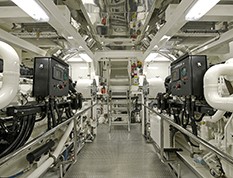
- Yacht Department Directory
- Engineering Department
About the Engineering Department
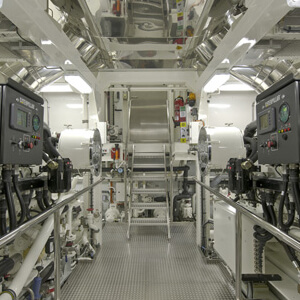
The engineering department aboard a yacht is essential to keeps things running. Working in this department requires a strong mechanical acumen, troubleshooting skills and the ability to maintain an immaculate engine room. Unlike in the commercial sector, engineers are often involved in docking procedures and guest water sport activities.
This department is responsible for the following aspects of the yacht operation:
- all engineering system operations and maintenance
- electronics & audio-visual
- air conditioning
- sanitation and environmental control
- engine room safety management (ISM)
- planned maintenance coordination (PMP)
The developmental track for a superyacht engineer is linear and involves specific certifications based on technical knowledge, in addition to experience at sea working on certain size engines. This career is suited for individuals with strong problem solving skills and that enjoy "tinkering". Junior engineers work closely with other engineers or captains to gain a basic understanding of the systems onboard. Although they may not have a license upon joining the vessel, the AEC license has minimal. Any person interested in working in the engine room in any capacity should consider investing in this basic certification.
As an engineer builds knowledge and time in the engine room, the numbers of systems they work on and gain understanding of will increase. To ensure constant progression, it is essential to accrue experience and time in the engine room, which will allow continuation of further licensing. The combination of hands-on learning from a senior engineer and technical education courses are compulsory to advance to a position as second engineer.
A second engineer is the chief engineer’s right hand and dependability is paramount. In this position, you have a good working knowledge of all yacht systems. At this level, you can complete basic maintenance and repair independently as well as effectively assist the chief on advanced projects. Your duties will also include working with outside vendors and contractors.
A chief engineer is fully accountable for the entirety of the engine room and safety aboard the yacht. The position requires leadership and strong management skills in addition to technical expertise. As the size of the yacht increases, so does the number of engineers on board, complexity of systems and scope of engineering projects that require detailed time and fiscal oversight.

Career Path
Chief engineer unlimited, chief y1 (<3000gt < 9000kw), chief y2 (<3000gt < 3000kw), chief y3 (<500gt < 3000kw), chief y4 (<200gt < 1500kw), 2nd unlimited, 2nd (<3000gt <6000kw), 2nd (<3000gt <3000kw), 2nd (<500gt <3000kw), oow engineer (meol), oow engineer (aec), electronics engineer (eto), junior engineer (unlicensed).

Yacht Engineer Training Courses
MCA Superyacht / SV Engineer training for vessels up to 9000kW and 3000GT
Yacht / SV Engineer Training Overview
Although there are different training routes and licensing authorities/countries under which engineers may qualify to work on superyachts, a common, broadly accepted route is the MCA Engineer Small Vessel Training Route. The MCA recently changed its engineering qualification structure in order to simplify the number and level of qualifications across the industry. They have pulled together pre-existing qualifications, leading to certificates of competency (CoC) restricted to yachts (and other small vessels) only. This single generic qualification is now referred to as " Engineer Officer Small Vessel Certificate of Competency" .
Please consult a recognized training provider before booking any training courses and view the "Engineer Officer Small Vessel of Competency" Marine Information note, found on the MCA website.
Find info, requirements and links to yacht engineer training centres for:
- Junior / Assistant Engineer
- 2nd Engineer Officer < 9000kW
- Chief Engineer Officer < 9000kW
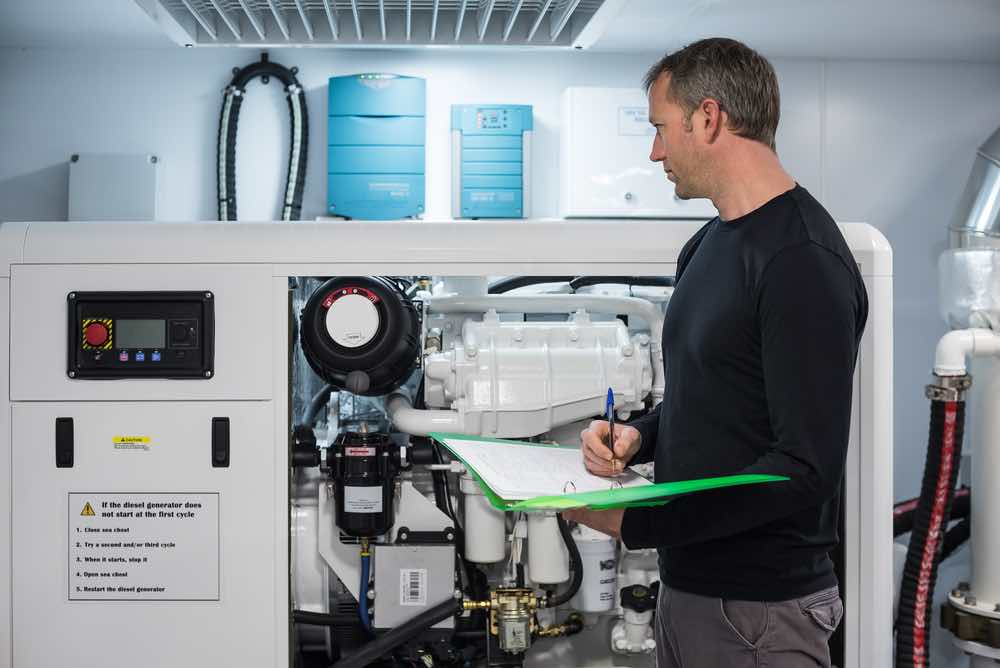
Junior / Assistant Engineer:
- An STCW : EVERY crew member onboard must hold a valid STCW
- An ENG1 Medical Certificate : EVERY crew member onboard must hold a valid ENG1
- AEC 1: The Approved Engine Course 1 is an entry-level qualification for the MCA engineering training schedule and is regarded as the first step on the ladder. It is generally a 5-day / 30-hour course that aims to provide candidates with practical basic hands-on training and theoretical knowledge of diesel engines. The main intention of this course is to teach the knowledge to serve in an ENTRY LEVEL capacity in the engineering department or for a crew member primarily working in another department to assist with engineering functions, for example, a deck/engineer. Holding an AEC certificate will allow you to be a chief engineer on a yacht over 24m and less than 200 Gross Tons or act as an assistant engineer on vessels over 200 GT up to 60NM from a safe haven.
- AEC 2: The Approved Engine Course II follows on from AEC I knowledge. It contains a more practical element when compared to the AEC I. This course has been designed so that engineering qualifications are transferable between different industry sectors such as yachts, workboats, tugs, fishing vessels and so on and there will no longer be offshore limits.
The AEC is your gateway ticket into becoming an engineer, it is, therefore, essential to hold this qualification, gain sea time and work on your training record book (TRB) in order to progress in the engine room.
Becoming a 2 nd Engineer:
There are three routes to obtaining a 2 nd Engineer Officer Small Vessel Certificate of Competency’ (Previously known as Y4):
- Standard Route
- Experienced Seafarer Route
- Alternative Route (For Graduate Engineers)
Standard Route:
This standard route benefits those who study through an accepted route of education involving MSQ (Maritime Studies Qualifications) modules. Completion of these will result in a Diploma in Maritime Studies: Small Vessel Engineer’. This route is extremely beneficial to superyacht engineers because of the reduced sea time required and because some of the syllabi can be completed on-board.
In order to follow this route, you must:
- Hold a Diploma in Maritime Studies: Small Vessel Engineer
- Complete Approved Engine Course I (AEC I) as well as The Approved Engine Course II (AEC II)
- Have completed 12 months’ combined sea service and workshop training, which must include: - 6 months’ seagoing service engaged in watchkeeping or Unmanned Machinery Space (UMS) duties on vessels of at least 350 kW; - 5 months’ seagoing service on vessels of at least 350 kW; - 2 weeks MCA-approved Initial Workshop Skills Training; - A further 2 weeks seagoing service on vessels of at least 350 kW or 2 weeks of MCA-approved additional Workshop Skills Training.
- Complete the MNTB Small Vessel Training Record Book (TRB)
- Complete the Diploma in Maritime Studies: Small Vessel Engineer
- Pass the MCA-approved written exams for - Marine Diesel Engineering ; - Auxiliary Equipment Part – 1 ; - Operational procedures, Basic Hotel Services and Ship construction
- Hold the applicable ancillary and safety courses: - All STCW Basic Training Modules - PSCRB - Advanced Fire Fighting - Proficiency in Medical First Aid - Human Element, Leadership and Management (Operational Level)
- Hold a valid ENG1 Medical Certificate or MCA accepted Equivalent
- Complete MCA oral examination for Second Engineer Officers on Small Vessels less than 9000 kW, less than 3000 GT, unlimited area, III/2 (syllabus available online, go to www.gov.uk and search “Small Vessel Oral Examination Syllabus”).
Experienced Seafarer Route:
This route is for existing seafarers serving on small vessels. You will not be required to complete the Diploma in Maritime Studies: Small Vessel Engineer , however you will need to complete a preparatory college course and SQA written examinations.
To be eligible to register for a study programme you must meet the following requirements:
- Have completed 24 months’ seagoing service on vessels of at least 200 kW
- Hold an Approved Engine Course (Both AEC 1 & AEC 2 )
- Hold STCW Basic Safety Training certificates: - Personal Survival Techniques (STCW Code A-VI/1-1) - Fire Prevention and Fire Fighting (STCW Code A-VI/1-2) - Elementary First Aid (STCW Code A-VI/1-3) - Personal Safety and Social Responsibilities (STCW Code A-VI/1-4)
Requirements / Notice Eligibility to sit MCA Oral Exam:
In addition to the above, candidates must complete the following in order to be issued with a notice of eligibility (noe) to sit an mca oral examination:.
- Additional 11 months’ seagoing on a vessel of 350 kW (must include a minimum of 6 months' seagoing service engaged in watchkeeping or UMS duties)
- 2 weeks MCA-approved initial Workshop Skills Training
- A further 2 weeks seagoing service on vessels of at least 350 kW or 2 weeks of MCA-approved additional Workshop Skills Training.
Certificate of Competency (Coc):
In addition to completing all of the experienced seafarer route requirements above, the candidate must:
- Complete and pass the following courses:
- MCA Marine Diesel Engineering
- MCA Auxiliary Equipment Part - 1
- Operational procedures, Basic Hotel Services and Ship Construction
2. Hold the applicable ancillary and safety course certificates listed in section 5:
- All STCW Basic Training Certificates - PSCRB - Advanced Fire Fighting - Proficiency in Medical First Aid - Human Element, Leadership and Management (HELM Operational Level)
3. Hold a valid ENG1 Medical or ENG1 Medical Equivalent Certificate 4. Pass the MCA oral examination for Second Engineer Officers on Small Vessels less than 9000 kW, less than 3000 GT, unlimited area, III/2 (syllabus available online, go to www.gov.uk and search “Small Vessel Oral Examination Syllabus”)
Alternative Route: (For Graduate Engineers:)
This route is for those candidates who hold a relevant engineering degree/diploma/apprenticeship. These qualifications should be sent to an MCA-approved training provider who will analyze their relevance and explain what the individual should do in order to obtain a 2 nd Engineer Officer Small Vessel CoC.
More information on the types of Graduate and Apprenticeship holders that qualify for this training route can be found in section 3.5 of the MIN 524 Notice .
If you are deemed eligible to enter into this programme you will need to apply directly to an MCA-approved nautical college. In order to find an appropriate college, search www.gov.uk for “MCA-approved nautical colleges".
In order to gain the Certificate of Competency you must:
- Complete a minimum of 6 months’ seagoing service engaged in watchkeeping duties
- Additional seagoing service / Workshop Skill training requirements based on the relevant HND, HNC or Engineering Apprenticeship, as laid out in point 3.5.3 of the MIN 534 Notice.
- Hold an Approved Engine Course I (AEC I)
- Hold an Approved Engine Course II (AEC II)
- Successfully Complete the MCA-approved modules and pass the corresponding exams for:- Marine Diesel Engineering - Auxiliary Equipment Part - 1 - Operational Procedures, Basic Hotel Services & Ship Construction
- Hold the applicable ancillary and safety course certificates:- All STCW Basic Training Certificates - PSCRB - Advanced Fire Fighting - Proficiency in Medical First Aid - Human Element, Leadership and Management (HELM Operational Level)
- Hold a valid ENG1 Medical or ENG1 Medical Equivalent Certificate
- Pass the MCA oral examination for Second Engineer Officers on Small Vessels.
Becoming a Chief Engineer :
- Chief Engineer 3000kw & <500GT
- Chief Engineer 9000kw & <3000GT
Chief Engineer Officer < 3000kW & 500GT
In order to qualify for the issue of this Certificate of Competency you must meet the following requirements:
- Complete a minimum of 6 months’ seagoing service as a Second Engineer on vessels of at least 350 kW (While holding an SV Second Engineer Officer < 9000kW & 3000GT STCW Convention regulation III/2 Certificate of Competency.
- Successfully complete the MCA- approved modules and pass the corresponding written examinations for - Chief Engineer Statutory and Operational Requirements - Auxiliary Equipment part - 2
- Hold the applicable ancillary and safety course certificates: - All STCW Basic Training Certificates - PSCRB - Advanced Fire Fighting - Proficiency in Medical First Aid - Human Element, Leadership and Management (HELM Management Level)
- Pass MCA oral examination for Chief Engineer Officer, less than 3000 kW, less than 500 GT, unlimited area, STCW Reg III/3
Chief Engineer SV <3000 GT & <9,000kW
- 24 months of seagoing service which must include:12 months as an SV Second Engineer or SV Chief Engineer while holding the applicable STCW Convention regulation III/2 Certificate of Competency:
- 6 months of sea service on 350 kW vessels & 6 months seagoing service on vessels 750 kW. (greater or equal to kW provided)
- Chief Engineer (SV) Statutory and Operational Requirements (Not required if SV Chief Engineer less than 3000 kW, less than 500 GT CoC already held)
- Chief Engineer (SV) Auxiliary Equipment Part 2 (Not required if SV Chief Engineer less than 3000 kW, less than 500 GT CoC already held)
- Applied Marine Engineering
- Complete either:a) MCA-approved modules and pass the corresponding written examinations for: General Engineering Science I & General Engineering Science II (exemptions may apply for candidates holding appropriate engineering degree) OR The Diploma in Maritime Studies: Small Vessel and the Diploma in Maritime Studies: Small Vessel Chief Engineer
- All STCW Basic Training Certificates
- Advanced Fire Fighting
- Proficiency in Medical First Aid
- Human Element, Leadership and Management (HELM Management Level)
- Pass the MCA oral examination for Chief Engineer Officer, less than 9,000 kW, less than 3,000 GT, unlimited area, STCW Reg III/3
FOR MORE INFO GO TO MCA WEBSITE MIN524
Alternative Routes to Become a Yacht Engineer:
The above method is the new MCA-approved and advised route to become a YACHT engineer, there are however other options available to you:
Experienced Marine Engineers: Marine engineers with qualifications for larger vessels, such as commercial tankers, container vessels, dredgers etc. or those with merchant navy tickets are usually able to work on yachts with these tickets. It is important to contact the MCA who will review these qualifications and ascertain a plan of action for you.
USCG: It is also possible to qualify as a yacht engineer through the United States Coast Guard route, again different flag states will have different requirements and it is advisable to contact the MCA for any further advice or information.
Find a Training Course Provider
Select a Course in order to view all training providers (use the location filter on the results page in order to refine your search).
STCW Basic Training Advanced Fire Fighting Approved Engine Course (AEC) HELM General Engineering Science 1 General Engineering Science 2 Proficiency in Medical First Aid SV Marine Diesel Engineering Proficiency in Survival Craft & Rescue Boats (PSCRB) SV Auxiliary Equipment SV Operational Procedures SV Applied Marine Engineering
Username or Email Address *
Remember me Lost your password?
Username or Email
Get New Password
- Information
- Looking For Crew
- Current Jobs
YACHT ENGINEERING JOBS
We recruit every role in the engine room from Chief Engineer to Motorman, including Sole Engineer, 2nd Engineer, 3rd Engineer, 4th Engineer, Tender Mechanic, Deck/Engineer, AV/IT Officer, IT Specialist, ETO and mo re!
Please note: Not all jobs are listed on our website.
Chief Engineer - 45m+ - Rotational following build!
We're working with a 45m+ new build explorer yacht, due to launch in August this year. They're looking for an experience Chief Engineer to take...
Project Manager / Lead Project Engineer
Project Manager / Lead Project Engineer Salary in the region of £140,000-160,000pa (can be on payroll or employed on a consultancy basis) Based in the South...
Rotational Second Engineer - 85m - Dual season
We're working with a Northern European build 85m yacht who are looking for a rotational 2nd engineer to join them. Minimum Y2 or 2nd engineer...
Rotational Chief Engineer - 55m+ - Dual Season
We're working with a 55m+ yacht that are looking for a Chief Engineer to join their crew. An SV Chief, Y1 or equivalent ticket is...
Rotational Second Engineer - 60m - World Cruising
We're working with a lovely 60m Northern European build who are looking for a rotational 2nd engineer to join them. The yacht is dual season,...
Rotational Second Engineer - 60m - Dual season / Charter
We're working with a fantastic, 60m+ Dutch build yacht who are looking for a Rotational 2nd engineer to join their crew. The yacht is dual...

The role of a superyacht engineer: Life on board

With the variety of on-board systems and equipment on today’s superyachts, engineering requirements are almost limitless. From maintaining the engine and generator, to installing a new water maker or air-conditioning unit, both on-board engineers and shore-based engineering companies are required to have an extensive and complex skill set when working within the superyacht industry.

What’s required of the engineering staff?
Traditionally, the engineering department is responsible for the yacht’s safety, performance and efficiency, handling all mechanical and electrical operations on board. They’re responsible not only for the engines, but also for the electrics, plumbing and performing general maintenance on all other equipment and machinery, such as refrigerators, air conditioning, tenders and Jet Skis.
Although engineers are required to have the knowledge to perform such technical tasks, it’s usual for an engineer to tend to more trivial matters day-to-day. He or she is responsible for just about everything on the yacht that could break and will need to be fixed.
This can include fixing blocked toilets, trouble-shooting false alarms, repairing personal items including laptops and phones for the guests, maintaining the toys, and getting the satellite TV to work. It’s therefore important that today’s superyacht engineers are a jack-of-all-trades, familiar with the comprehensive range of the equipment found on board.
Another important part of the role will be being able to transition yourself well between engine room work and interacting with the guests.
The engineering department on board
The number of engineering staff on board will depend on the size of the yacht: Smaller yachts may rely on the captain and outsourced engineering companies to complete the majority of jobs that arise, but, as yachts start to get above the 20-metre (65-foot) range, they will usually have a dedicated engineer aboard as part of the crew.

For the larger superyachts, staff may include a chief engineer, with a second or third engineer working underneath them, as well as possibly an ETO (electrical technical officer) and other junior roles.
On some yachts, there may also be a duel-deck engineer to help out with the deck and engineering jobs, and apprentices can even be hired in some instances. Superyachts over 100m may even have specialist tender engineers on board just for the tenders, pushing the engineering department as high as five, six or seven members.
Engineering jobs on board a superyacht
Chief engineer: A highly respected role with good pay, the chief engineer teaches and supervises other engineers/deck staff and all engineering and electrical operations. On smaller yachts, there may just be one engineer in control of everything – a wide-ranging job, offering plenty of experience.
Second/third engineer: Working under the chief engineer, the second/third engineers will be expected to have a wide knowledge and will work across all/most aspects of engineering on board, depending on the other engineering staff.
Electrical technical officer (ETO): Responsible for the day-to-day maintenance of all electronic, computer, audio/visual and communications equipment, ensuring its efficient operation. On a large superyacht these systems are likely to be numerous.
Electrician: Similar to the role of an ETO, taking care of all electrical circuits on board, circuit breakers and switches, lighting, batteries, etc.
Duel-deck engineer: A cross between a deckhand and an engineer, duties involve deck jobs as well as some engineering-type responsibilities, depending on the yacht and its needs.
Assistant engineer: An entry-level position on larger yachts that offers a great opportunity for experience and learning, assisting all other members of the engineering department with their work.
Tender engineer: On the very large superyachts, there may be positions for tender engineers to look after and use the tenders and other water-sports equipment when needed.
Learn more about the roles, responsibilities and expected salary of a supryacht engineer.

How can a shore-side engineering company help?
Specialist superyacht engineering companies are always available for assistance, when the on-board team is in need of extra
When demand gets too high or the jobs too specialist, shore-side engineering companies are always available for assistance. As mentioned above, the role of the superyacht engineer is continually expanding, and this is no different to the role of the superyacht engineering company.
In fact, many superyacht engineering companies consist of ex-superyacht engineers and crew, so they are used to fixing a range of different problems. They are often asked to help with unusual requests that the engineering staff on board cannot solve, as well as standard requests for parts etc.
Mike Dellar of Yacht Engineering Solutions (YES) commented, “Our target audience is the entire yachting industry here in Mallorca, from smaller sailing and motor yachts through to the biggest superyachts, if we can offer a service they need we will be there. We often receive the criticism that we are doing too much, but we fill a niche area, an area that the specialists don’t meet; those problems that no one can find a solution to or there is no solution on the market.”
Find out how to become a yacht engineer in our expert guide.
Tried & Tested

A jacket completes any crew member's uniform so it's an important garment to get right. In this Tried & Tested, Sea Design pits eight popular jackets against one another to determine which one is best for superyacht crew in 2023.
iAQUA creates high-performance, technologically advanced underwater scooters. In this Tried & Tested, a team of experienced testers have rated and reviewed the AquaDart Pro and AquaDart Nano series to reveal the stand-out iAQUA sea scooter.
In our 2022 Tried & Tested, yacht toy specialist EAMS and a group of captains and crew review a selection of the very best luxury water toys on the market. Find out which toy was crowned the winner...
The 2024 Sanctuary Cove International Boat Show (SCIBS) is set to be one of the most exciting yet, with nearly 100 launc...

The Sanlorenzo SL90A has arrived in London to take centre stage at the Sanlorenzo Immersive Experience. This 28-metre (9...

Popular Articles
Finished reading now find your perfect supplier..
Search our industry-leading directory for over 20,000 superyacht suppliers, providers and marinas.

Chief Engineer (Yacht 4) - Less than 200GT and less than 1,500kW
Country: - all - Croatia (1)
The following course was found:

Yacht Engineer
Mechanical maintenance of the yacht, the engineer is responsible for the yacht's mechanical systems, including engines, generators, and other equipment., how to become an engineer on a yacht.
To become an engineer on a superyacht, you will typically need the following qualifications and skills:
- A relevant engineering education or experience, such as a marine engineering degree or a mechanical or electrical engineering degree with marine experience.
- Relevant professional engineering qualifications, such as a marine engineering officer’s certificate of competency, issued by the maritime authority of the country you are working in.
- Experience working with marine propulsion systems, electrical systems, and other marine engineering systems.
- Strong problem-solving skills and the ability to troubleshoot and repair complex systems.
- Familiarity with marine engineering regulations and safety standards, such as SOLAS (Safety of Life at Sea) and MARPOL (International Convention for the Prevention of Pollution from Ships).
- Strong organizational and time-management skills, as superyacht engineers are often responsible for maintaining and repairing a wide range of systems and equipment.
- Good communication skills and the ability to work well in a team.
- A valid ENG1 medical certificate, which is required for all professional mariners in the UK, is issued by a doctor who is approved by the Maritime and Coastguard Agency (MCA) or the equivalent being a Seafarers medical certificate.
- STCW (Standards of Training, Certification and Watchkeeping) certificate, which is required for all professional mariners in the UK, and is issued by the MCA.
- A valid seaman’s book or a discharge book, which is issued by the flag state, to prove your sea-going experience.
- A valid marine engineering officer’s certificate of competency issued by the maritime authority of the country you are working in.
- A valid safety management course (SMC) certificate issued by the maritime authority of the country you are working in.
- A valid security awareness certificate issued by the maritime authority of the country you are working in.
- A valid first-aid certificate issued by the maritime authority of the country you are working in.
- A valid fire prevention and firefighting certificate issued by the maritime authority of the country you are working in.
- A valid personal survival techniques certificate issued by the maritime authority of the country you are working in.
- A valid survival craft and rescue boat certificate issued by the maritime authority of the country you are working in.
- A valid ship security officer certificate issued by the maritime authority of the country you are working in.
- A valid fast rescue boat certificate issued by the maritime authority of the country you are working in.
- A valid medical care certificate issued by the maritime authority of the country you are working in.
It is worth noting that the requirements for yacht engineers can vary depending on the yacht and the area in which you plan to operate, so it is essential to check the specific regulations and requirements in your area. It’s also worth noting that some yacht owners may require some specific certifications or training for the yacht systems, so being familiar with the yacht systems, including navigation and communication systems, generators, sewage treatment and water-making systems, and refrigeration and air conditioning systems, is essential.
Yacht Engineer FAQs
What are the qualifications and experience required to be an engineer on a superyacht?
Engineers on superyachts typically hold a marine engineering or mechanical engineering degree or equivalent certification, such as a marine engineer officer’s license. They should also have experience in marine engineering and knowledge of the systems and equipment used on superyachts.
- RYA Diesel Engine Course
- MCA Approved Engine Course (AEC 1 & 2) Certificate
- MCA Engine Watch Rating Certificate
- MCA Marine Engine Operator License (Y)
- RIII/3 Y4 Chief Engineer (<200gt <1500kW)/ Second Engineer/ EOOW (SV) (<3000gt <9000kW)
- RIII/3 Y3 Chief Engineer (<500gt <3000kW)/ Chief Engineer (SV) (<500gt 3000kW)
- RIII/2 Y2 Chief Engineer (<3000gt <3000kW)/ Chief Engineer (SV) (<3000gt <9000kW)
- RIII/2 Y1 Chief Engineer (<3000gt <9000kW)/ Chief Engineer (SV) (<3000gt <9000kW
- RIII/1 Engineer Officer of the Watch (Unlimited)
- RIII/2 2nd Engineer (Unlimited)
- RIII/2 Chief Engineer (Unlimited)/ Class 1
What are the main responsibilities of an engineer on a superyacht?
Engineers on superyachts are responsible for the maintenance, repair, and operation of the yacht’s engines, generators, propulsion systems, and other mechanical and electrical equipment. They also work closely with the captain and crew to ensure the yacht’s systems are functioning correctly and safely.
How does the engineer interact with the rest of the crew and guests?
Engineers interact with the rest of the crew to ensure the yacht’s systems are functioning correctly and to provide technical support and troubleshoot issues that arise. They also interact with guests to ensure their comfort and safety by providing information about the yacht’s systems and handling any requests for repairs or maintenance.
How does the engineering plan and maintain the yacht’s systems?
Engineers plan and maintain the yacht’s systems by developing and implementing a schedule for regular maintenance, inspections, and repairs, as well as monitoring the yacht’s systems during operation and troubleshooting any issues that arise. They also keep detailed records of all maintenance and repairs and report any issues or concerns to the captain and crew.
What is the typical schedule of an engineer on a superyacht?
Engineers on superyachts typically work long hours, including evenings and weekends, as they are responsible for monitoring the yacht’s systems at all times. They are also on call 24/7 in case of any emergency situations.
How does the engineer handle emergency situations?
Engineers handle emergency situations by quickly assessing the situation and taking appropriate action, such as shutting down systems or activating the fire suppression system. They also work with the rest of the crew to ensure the safety of the guests and crew and to troubleshoot and repair any damage as quickly as possible.
What are the everyday challenges of being an engineer on a superyacht?
Engineers on superyachts face many challenges, including dealing with extreme weather conditions, managing maintenance and repair schedules, and ensuring the safety of the guests and crew. They also face the challenge of working in a confined space with limited resources and must be able to think and act quickly in emergency situations.
What is the typical salary range for an engineer on a superyacht?
Chief engineers on a 100-metre-plus (328-foot) yacht typically earnt around €12,000 (c. $13,073) to €15,000 (c. $16,341) per month in 2021. Comparatively, a chief engineer on a 30- to 40-metre (98- to 131-foot) yacht earnt on average between €4,000 to €6,000 (c. $4,357) to ($6,535) per month.
Yacht Engineer Jobs
**PLEASE NOTE-POSITION NOW FILLED** JUNE 2023
Engineer urgently required for an immediate start for a 33m private motor yacht. This is a full time position, non rotation. Homeport Barcelona and cruising Western Mediterranean. The yacht runs with a crew of 5 and will require the successful candidate to be hands on and a team player.
Salary in the region of USD $7,000 per month 38 days leave with option to take further unpaid leave subject to the yacht cruising programme.
AEC required as minimum. Y4 advantageous STCW ENG 1 IT/AV skills and experience essential. Volvo Main engine. A good level of English language is essential
*Male applicants only please due to the cabin arrangement*
Our client is urgently seeking an Engineer/Deck for a private 46m classic sailing yacht. Mediterranean cruising for the summer and yard period in Spain for a number of months in the winter. The yacht will be embarking on a circumnavigation next year and will also be chartering. This opportunity is ideal for someone who has a solid sailing background and who is keen for an adventure. This is very much a family oriented yacht and candidates must also be prepared to help out on deck and in other areas when required.
Candidates already holding EOOW would be a great benefit but not essential. AEC 1&2 as minimum. Salary on offer in the region of €4,500 per month. DOE Start date: Immediate to join the yacht in Mallorca. Leave is flexible but is offered at 30 ‘natural days per month. SEA contract given.
3rd Engineer
Our clients are seeking a 3rd engineer for a rotational position on a 70m classic motor yacht. This offers a great opportunity for those wishing to cross over from a commercial background into the yachting industry. Certificates required: AEC 1&2 as minimum, preferably EOOW. STCW, ENG 1, Discharge book, PDSD – Start 4th May Opportunity to work on a unique classic motor yacht running original main engines, these 90-year-old slow speed, open rocker reversing engines are only driven from the engine room, and as the successful applicant, will essentially be driving them. Watch-keeping experience, IDEA Planned maintenance, self-driven and the desire to learn a must. Commercial or previous engineering experience. AEC2 – Y4 min, ideally EOOW. 2:1 rotation 3.2K Euro paid monthly. All flights to and from vessel paid for. When underway, operating 4 hours on 8 hours off, during this watch, required to conduct oiling rounds on the mains, shafts every hour, constant observation of the plant, a full log is completed and is a busy watch. Mediterranean cruising summer 2022/Caribbean winter 22/23
© 2024 All rights reserved
Privacy Overview

Yachts for Sale
Selling a Yacht
Tenders & Toys
Recent Sales
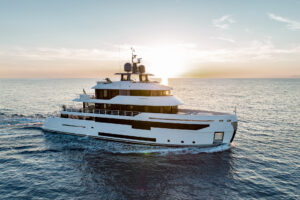
NEVER SAY NEVER AGAIN

Yachts for Charter
Destinations
Experiences
Charter Management
Charter Guide
Yacht Marketing
How to Charter

Superyacht Management
Crew Structure
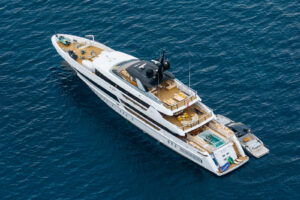
THE WELLESLEY
Superyacht Construction
New Yachts for Sale
Yacht Design
Yacht Shipyards
Custom Construction
Built on Trust
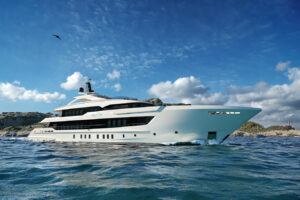
Heesen 55m Steel

Benetti Oasis
Yacht Shows
News & Blog

Yacht Engineer Jobs
A much-needed trained professional aboard any superyacht, a yacht engineer’s primary role is to oversee the safe and efficient running of a yacht. A mid-life position, a yacht the engineer will either work by themselves or can be in charge of an engineering department, depending on the size of the yacht. This department is tasked with maintaining both the mechanical and electrical operations of the yacht, from the main engines to the small onboard appliances. It is the responsibility of a chief yacht engineer to watch over the safety of other engineers in the engine room, as well as other workers within the department. Yacht engineers jobs are available on both privately owned yachts as well as charter yachts, which are rented out per day or week.
Yacht engineer jobs are extremely rewarding. Given you have completed the STCW Basic Safety training and have an ENG1, you can begin looking for a job as a yacht engineer today. Check out our entire yacht engineer job offerings for more information.
DUTIES AND RESPONSIBILITIES
A yacht engineer’s daily tasks include ensuring all equipment is maintained properly and is in safe working conditions at all times; overseeing the yacht’s communication equipment; and making sure all engineering work is done correctly. This includes keeping relevant documents and logs up to date such as the Engine room Log, managing the disposal of oil, Blige water and sludge from the yacht and carrying out watch duties. The exact day-to-day job description of a yacht engineer varies per yacht, type and size of the yacht.
YACHT ENGINEER SALARIES
Yacht engineer salaries vary, depending on the size and types of yacht. Data indicates that working on a charter yacht can see a yacht engineer earn more than on a private yacht, but the role of chief engineer earns more on a private yacht in turn. A chief yacht engineer salary on a 66m yacht starts around €5,000, but it can increase to up to €12,000 for a chief yacht engineer working on 101 plus meter yacht.
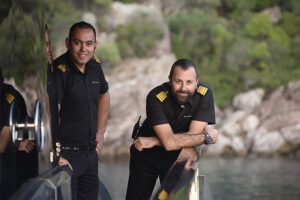
Chief Engineer 45m Yacht
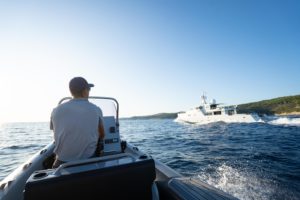
Deckhand/Engineer
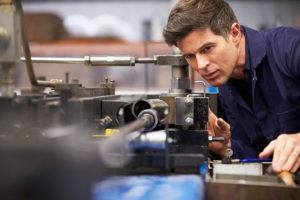
55m Motor Yacht looking for a 2nd Engineer

45m looking for a Chief engineer
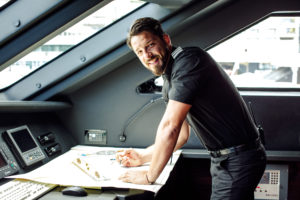
A 52m private motor yacht is looking for a deck/engineer

2nd Engineer needed for a 63m yacht

YACHTS FOR SALE
YACHTS FOR CHARTER
CHARTER MANAGEMENT
+377 97 77 67 57
Privacy Policy
SEO by The Agency

Yachts for sale
Selling a yacht
Recent Sale
Subscribe to our newsletter to receive our latest offers, news and the finest selection of superyachts.

By Wilsonhalligan Yacht Recruitment 16 May 2017
How To Become A Yacht Engineer – Qualifications and Requirements
If you are looking for a career as a yacht engineer, we’ve compiled a breakdown of the qualifications and requirements needed to start out, insight into the job day-to-day and how to effectively land your dream position. what does a yacht engineer do ….
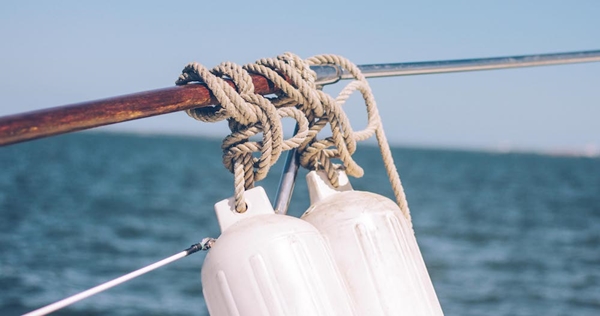
If you are looking for a career as a yacht engineer, we’ve compiled a breakdown of the qualifications and requirements needed to start out, insight into the job day-to-day and how to effectively land your dream position. What Does a Yacht Engineer do?
Depending on type, size and usage of the yacht, the Engineering department (be that a Sole Engineer or a department of 6 or more Engineers) are responsible for the operation, maintenance and repair of all mechanical, electrical, electronic, hydraulic, pneumatic and in some cases, structural systems and appendages found on board a modern yacht and superyacht.
Skills Needed to be a Successful Yacht Engineer
The role requires a keen eye for planning and organisation, as planned maintenance (carrying out preventative and explorative maintenance before failures occur) is a very important aspect in modern marine engineering. Skills in project management, resource allocation and time management are very desirable in addition to extensive and diverse technical ability. Many yachts employ software programs to aid a methodical approach to planned and preventative maintenance and to record failures and repairs as they occur as well as keeping an accurate inventory of spares held on board. Being able to efficiently use such software programs efficiently would be highly advantageous. Examples of these asset management programs are AMOS and IDEA .
Challenges as an Engineer Onboard a Yacht
Engineering on a superyacht has particular challenges as some yachts (particularly charter yachts) can be very busy, meaning a very fast paced and demanding environment. High expectations from owners and guests in regards to service and entertainment also puts a keen onus on engineering departments to keep all systems working to minimise or eliminate down time and negative impacts on the itinerary. Of course, when the yacht is at sea, many of these systems are safety critical and break downs and failures offshore bring a whole new set of challenges and risks.
Which qualifications do I need to get in to superyacht engineering?
There are really two main entry routes in to yacht and superyacht engineering which follow two distinct certification pathways – entering from commercial shipping, or working through yacht-based certification routes.
Commercial Shipping Route of Training for Yacht Engineering
The Commercial Shipping route most commonly begins with a sponsored cadetship with a shipping company working in partnership with maritime training provider. Candidates must apply to one of a number of cadetship schemes and if accepted will undertake usually 3 years of study and work experience on the sponsoring companies’ vessels, culminating very often in the Officer of the Watch (Engineering) or ‘EOOW’ ticket and usually either an HND or BSc Degree in Marine Engineering or similar.
Once the EOOW certificate is in hand, candidates can be considered suitably qualified and experienced for junior engineering officer roles on large yachts. A common first yachting job for EOOW qualified candidates is 3rdEngineer. The main advantage of a cadetship is that seatime is gained quickly and on vessels over 3000 GT, allows for a ticket which is ‘unlimited’ by tonnage as all yacht engineering certificates are. This opens the door to working on the world’s largest mega and superyachts.
Also, the sponsoring company pays for all courses and examinations which would be extremely expensive if self-sponsored, and very often a small training bursary is paid on top (some as much as €11,000 / year). The biggest disadvantage is that candidates who ultimately want to work on superyachts will have to commit to different types of vessel for the duration of the cadetship – these are likely to be chemical tankers or containerships, but most of the large luxury cruise ship companies also offer cadetships which is in some ways closer to the yachting industry. One facilitator of maritime cadetships is the Warsash Maritime Academy – see here .
Yacht Certification Route of Training for Engineering
This route is made up of 6 key certificates:
The Approved Engine Course (AEC) – often seen as the base-minimum for superyacht engineers who wish to work on yachts over 24m LOA. Usually a 4-day course covering the theory of compression-ignition (diesel) engines and includes a large amount of practical workshops. The full syllabus can be found here . One common provider of AEC courses is Bluewater Yachting in Antibes – see here .
The Marine Engine Operators Licence (MEOL) – This is the first certificate in the yacht route that requires sea service, specific shore based learning and an oral exam. Further details can be found in MSN 1859 here .
Y4 Engineer – The first of what is commonly referred to as the ‘Y Tickets’ – Y4 allows engineers to work as Chief Engineer on yachts between 200 and 500GT and up to 1500Kw in propulsive power.
Y3 Engineer – Allows engineers to work as Chief Engineer on yachts up to 3000GT and up to 3000KW in propulsive power.
Y2 Engineer – Allows engineers to work as Chief Engineer on yachts up to 3000GT and up to 6000KW in propulsive power.
Y1 Engineer – Allows engineers to work as Chief Engineer on yachts up to 3000GT and up to 9000KW in propulsive power.
The Maritime and Coastguard Agency have simplified the Y ticket structure however, and page 19 of MIN 524 provides a simple conversion table from Y tickets to the new standard – Small Vessel (or SV) tickets.
Some course providers are now offering yachting cadetships – one example is this one provided by the UKSA in Cowes on the Isle of Wight –see more here .
How are Engineering Departments Structured on Yachts?
Engineering departments vary widely according to the type, size and usage of the yacht in question, but most large yachts will have some or all of the following roles on board:
Chief Engineer (or Sole Engineer on smaller yachts with only one engineer) The Chief Engineer is in overall command of all Engineering operations on board and is the senior advisor to the Captain on all matters related to the condition and serviceability of the yachts engines, propulsion, ancillaries and hotel systems. Although Captains always retain supreme responsibility for the safety of the vessel, all the best captains will work very closely with the Chief Engineer and take heed of any advice and requests they make – after all, they are highly trained, experienced and knowledgeable subject matter experts. Chief Engineers are responsible for ensuring that the Yacht is in all respects compliant with the relevant laws and regulations governing the serviceability of the yachts systems and equipment. They are pivotal in ensuring the yacht passes any relevant flag state, port state or P&I club surveys and inspections.
1st Engineer Some of the very largest yachts afloat employ a 1st Engineer similar to those employed on Cruise Ships. If a 1stEngineer is employed, they will take operational (day-to-day) command of the engineering team, supervising engineering tasks and allocating work as appropriate. This allows the Chief Engineer to concentrate on the large amount of paperwork and business management necessary on board a very large yacht.
2nd Engineer The more common understudy to the Chief Engineer, the 2nd Engineer often has responsibility for Engine Room maintenance and will take on many of the more challenging maintenance and repair tasks as required. The 2ndEngineer acts as a supervisor for more junior crew, and in some cases will be able to deputise for the Chief Engineer if required.
3rd Engineer The 3rd Engineer will have specific duties, which may include maintenance of the ship’s lifeboats, tenders, jet skis, toys and deck equipment like winches, davits and hatchways. Very often 3rds are responsible for interior maintenance. Again, areas of responsibility vary from yacht to yacht. 3rd Engineers are often focused on gaining the requisite experience and ‘seatime’ to progress to 2nd Engineer.
4th Engineer The most junior engineering officer on board, the 4th is very often new to Marine Engineering and is learning the trade. 4th Engineers are often engaged in structured learning programs, or at least splitting their time between phases at sea learning on the job with phases ashore attending courses. Again, this can vary widely across the industry.
Motorman A junior, but important role found almost exclusively on large yachts in excess of around 100m, the motorman (not gender-specific!) is responsible for the operation and basic maintenance of the yachts main engines and engine room systems. They may assist in starting and stopping large engines and generators, operating switch panels under the supervision of an officer or senior engineer and reporting anything unusual. Engine room cleanliness and order will be an important part of the role.
Wiper / Oiler On the largest yachts, especially those operating medium speed diesels or older conventional ship propulsion technology, a wiper and oiler may be employed in addition to the above with a focused role keeping engines and machinery spaces clean, and keeping greased bearings fed or keeping open rockers oiled etc. An ability to access confined spaces is often useful, and a keen eye for cleanliness in bilges and bunded tanks etc is often a must.
How To Find a Job as a Superyacht Engineer
Once you have the relevant qualifications, then comes the time to start looking for your first position. Of course, word of mouth and personal connections made through training are a fantastic way to gain knowledge on current positions available however, also consider the following:
Dockwalking – travel to one of the main superyacht hubs like Palma, Antibes or La Ciotet and walk the docks asking yachts if they need engineering crew. Make sure you take a proper CV, written references and go well presented. Be polite and be prepared for a good deal of face-to-face rejection, however don’t take it personally.
Use a reputable crew agent such as wilsonhalligan who is MLC 2006 compliant, vastly experienced and a well respected crew recruitment agency in the industry who does the dock walking for you!
Check out our latest jobs here and we often post featured engineering jobs on our Facebook page – like our page here to keep up with the latest jobs and industry news.
View company profile
The entity that submits this press release to SuperyachtNews.com hereby accepts sole responsibility for the facts, accuracy and completeness of the content. All content and mediums submitted are an acknowledgement of the suitability for publication. SuperyachtNews.com accepts no liability or responsibility for any inaccuracies or errors made by the submitter in this regard.
Click here to become part of The Superyacht Group community, and join us in our mission to make this industry accessible to all, and prosperous for the long-term. We are offering access to the superyacht industry’s most comprehensive and longstanding archive of business-critical information, as well as a comprehensive, real-time superyacht fleet database, for just £10 per month, because we are One Industry with One Mission. Sign up here .
Sign up to the SuperyachtNews Bulletin
Receive unrivalled market intelligence, weekly headlines and the most relevant and insightful journalism directly to your inbox.
Sign up to the SuperyachtNews Bulletin
The superyachtnews app.

Follow us on
Media Pack Request
Please select exactly what you would like to receive from us by ticking the boxes below:
SuperyachtNews.com
Chemical Communications
Modulating ferroelectric phases in cholesteryl-based organic compounds with perfluoroalkyl tail engineering.
Here, we synthesized a series of cholesteryl-based compounds, whose phases and their transformation can be modulated by temperature and the chain length of the fluoroalkyl moieties. To our knowledge, this is the first time that the phase transition could be modulated with perfluoroalkyl tail engineering in organic single-component ferroelectric crystals.
Supplementary files
- Supplementary information PDF (2598K)
- Crystal structure data CIF (3331K)
Article information
Download citation, permissions.
H. Jiang, N. Zhang, W. Mao, J. Lan, L. Zhou, H. Xu, H. Zhang and W. Liao, Chem. Commun. , 2024, Accepted Manuscript , DOI: 10.1039/D4CC00840E
To request permission to reproduce material from this article, please go to the Copyright Clearance Center request page .
If you are an author contributing to an RSC publication, you do not need to request permission provided correct acknowledgement is given.
If you are the author of this article, you do not need to request permission to reproduce figures and diagrams provided correct acknowledgement is given. If you want to reproduce the whole article in a third-party publication (excluding your thesis/dissertation for which permission is not required) please go to the Copyright Clearance Center request page .
Read more about how to correctly acknowledge RSC content .
Social activity
Search articles by author.
This article has not yet been cited.
Advertisements
Javascript must be enabled for the correct page display.

- Find a Person
- Department Resources
Department of Materials Science and Engineering
- Department Leadership
- MatSE Faculty
- External Advisory Board Members
- Strategic Plan
- Diversity, Equity, Inclusion and Belonging
- 115th MatSE Anniversary
- By The Numbers
- Faculty Honors and Awards
- Safety is our Priority
- Accreditation
- Materials Visualization Competition (MVC)
- Taylor Lecture
- Tressler Lecture
- McFarland Award
- Visit/Contact Us
- Friends of MatSE
- Bachelor of Science (B.S.)
- Undergraduate Minors
- Laboratory Facilities
- Major Exploration
- Undergrad Admissions and Aid
- Come Visit, Get to Know Us
- Undergraduate Research
- Clubs and Organizations
- Diversity Programs
- Honors, Exhibitions, and Award Competitions
- Internships & Career Resources
- Undergraduate Lab Access
- Ombudsperson
- Helpful Penn State Resources
- Millennium Scholars Program
- EMSAGE Laureate
- Ryan Family Student Center
- How to Apply - IGDP
- Admission Requirements
- IGDP Faculty
- Research Groups
- Research Videos
- Masters of Science (M.S.)
- Accelerated M.S. in MatSE
- Additive Manufacturing and Design (M.S. and M.Eng)
- Doctoral Degree (Ph.D.)
- Computational Materials Doctoral Minor
- Program Learning Objectives
- Graduate Course Listing
- Assistantships, Awards, Scholarships, and Fellowships
- Graduate Organizations
- Graduate Poster Competition
- Accelerated M.S. Poster Session
- MRS Student Spotlight
- NSF Graduate Research Fellowships
- Polymer Physics Seminar
- Accelerated M.S. Handbook
- IGDP Handbook
- Contact Graduate Program
- Ph.D. Comprehensive Exam
- 590 Seminars
- Qualifying Exam Committee Evaluation Form
- Find a Faculty Member
- Facilities and Centers
- Research Focus Areas
- Job Opportunities
- For Industry
- Alumni Spotlight
- Get Involved
- EAB Intranet
- Tenure-line Faculty
- Research and Teaching Faculty
- Emeritus Faculty
- Associated Faculty
- Lectures in Materials
- DEIB Events and Programs
- MatSE Spring Awards
- Imagine Fall/Winter 2023
- Imagine Spring/Summer 2023
- Imagine Fall 2022
- Imagine Summer 2022
- Imagine Fall 2021
- Imagine Summer 2021
- Imagine Fall 2020
- Imagine Summer 2020
- Imagine Fall 2019
- For the Media
- News & Events
- Event Calendar
2024 Sustainability Expo at Shaver’s Creek Environmental Center

2024 Sustainability Expo will be held Saturday, April 6, from 11 a.m. to 4 p.m. at Shaver’s Creek Environmental Center.
This free event, open to the public, will focus on sustainability efforts at Penn State and feature a research poster competition with cash prizes for undergraduate and graduate students and postdocs, nature walks and guest speakers, as well as a special presentation by Eberly College of Science Sustainability Council Chair Charles Anderson. Food and transportation will be provided. Registration is required by March 23 for participants and general attendees alike.
Students and postdocs are encouraged to enter the research poster competition, and abstracts must be submitted by March 22.
More From Forbes
Blueprints for innovation: engineering leadership in the next decade.
- Share to Facebook
- Share to Twitter
- Share to Linkedin
Valentin Buzea CTO & cofounder of Waydev .
Software development is facing a crisis: The U.S. Bureau of Labor Statistics estimates a global developer shortage of 85.2 million by 2030 . This staggering number highlights the urgent need for engineering leaders to adapt their strategies. Although traditional metrics remain essential, broader frameworks and the strategic use of AI offer fresh insights for driving innovation, achieving more with less and building world-class software.
1. The DORA Metrics Revolution
DevOps research and assessment (DORA) metrics , which include deployment frequency, lead time for changes, change failure rate and mean time to recovery, have become the gold standard for assessing software delivery performance. Over the past five years, they have highlighted:
• The Velocity Imperative: High-performing teams deploy code frequently and in small increments, reducing risk and increasing how fast they’re deploying.
• CI/CD As Key: Leaders prioritize continuous integration and delivery for faster lead times and reduced failure rates.
• Quality And Speed Are Not Opposites: High DORA scores correlate with lower change failure rates—fast teams aren't sloppy.
• Stability As A Measure Of Success: Rapid recovery (MTTR) is as crucial as preventing problems in the first place.
New Leak Claims Samsung Will Replace Galaxy Z Fold 6 Ultra
Massive ‘apex legends’ hack disrupts na finals, raises serious security concerns, three exhausted ukrainian brigades guarded robotyne. just one fresh brigade—the 141st—came to help., 2. space: the dx factor.
DORA metrics primarily focus on output, while the SPACE framework adds depth by examining developer well-being and workflows. The SPACE framework aims to measure developer productivity holistically, encapsulating the following dimensions: satisfaction and well-being, performance, activity, communication and collaboration and efficiency. It can reveal a crucial link between developer experience (DX) and sustainable performance:
• Happy developers are productive developers. Addressing SPACE's "satisfaction" dimension minimizes the chances of burnout and boosts long-term team health.
• Communication is code. Efficient code review and knowledge transfer between engineering teams are vital to DORA's success.
• Friction is the enemy. The SPACE framework focuses on efficiency and uncovers roadblocks that DORA metrics wouldn't expose directly, as it measures performance more holistically.
3. Measuring And Improving DX
The "developer experience" (DX) is no longer just buzzwords—it is the overall experience developers have while working on a software project, from the clarity of documentation to the efficiency of workflows. Here's how its measurement has matured.
• Beyond Surveys: Qualitative feedback is still crucial, but it's now combined with quantitative metrics from developer tools.
• Toolchain As Data Source: DX platforms analyze tool usage, pain points and where developers spend their time.
• The Baseline Matters: Teams track DX metrics over time to see the true impact of improvements to processes or tools.
4. AI-Powered Engineering Leadership
AI is reshaping how engineering leaders work.
• Beyond A Gut Feel: AI analyzes vast datasets on patterns, allocation and historical performance to guide more informed decision-making.
• Prediction, Not Reaction: AI models can highlight potential bottlenecks before they become crises, allowing proactive management. This includes identifying areas in which DX is lagging.
• Nurturing Over Surveillance: Leaders use AI insights to identify skills gaps or mentorship needs on their teams, moving away from micromanagement.
• The Human Touch: AI augments leadership—it doesn't replace the need for empathy, clear communication and strategic vision.
The Future Is Built On Data And Empathy
I believe the next decade will see engineering leaders embrace a blended approach, leveraging DORA for benchmarking, applying SPACE for a holistic view and strategically using AI. Success lies in combining data-driven insights with understanding the human element that drives great software development.
Forbes Technology Council is an invitation-only community for world-class CIOs, CTOs and technology executives. Do I qualify?

- Editorial Standards
- Reprints & Permissions

IMAGES
VIDEO
COMMENTS
There are two common routes for becoming a superyacht engineer. Firstly, you can enroll in the courses set out by the Maritime and Coastguard Agency (MCA) and work your way through them from the bottom up. These include the Approved Engine Course (AEC), the Marine Engine Operator License (MEOL), and the Yacht 4, 3, 2 and 1 qualifications (with ...
This route is made up of 6 key certificates: The Approved Engine Course (AEC) - often seen as the base-minimum for superyacht engineers who wish to work on yachts over 24m LOA. Usually a 4-day course covering the theory of compression-ignition (diesel) engines and includes a large amount of practical workshops.
The Maritime and Coastguard Agency (MCA), have set out the basic course progression you will need to follow in order to work your way up from a Junior Engineer, to Chief Engineer onboard. This involves completing the AEC, MEOL and Yacht 4, 3, 2 and 1 qualifications. The qualifications you require include: A mechanical, diesel or electrical ...
if you are going straight for the Y4 CoC, you need to prove 42 months service as a yacht engineer, with a minimum of 12 months on yachts of 350kW or more in propulsion power, which must include at least 6 months actual sea service. or. 6 months service as a yacht engineer, on yachts of 350kW or more in propulsion power, whilst holding a MN ...
Then, with further experience and sea time, you can continue to work your way through the Maritime and Coastguard Agency (MCA) engineering qualifications; MEOL (Marine Engine Operator License), Yacht 4, Y3, Y2 and Y1, or alternatively further down the line branch off and complete the newly launched Small Vessel qualification, as eventually the ...
Above 50m, the Chief Engineer contracts are generally Rotational. The breakdown of their salary per month is below: On yachts above 50m, crew may be offered Permanent Second Engineer or Rotational Second Engineers contracts. The average monthly salary for yachts from 50-90m for Permanent Second Engineers is as follows:
This route is made up of 6 key certificates: The Approved Engine Course (AEC). Often seen as the base-minimum for superyacht engineers who wish to work on yachts over 24m LOA. Usually a 4-day course covering the theory of compression-ignition (diesel) engines and includes a large amount of practical workshops.
Superyacht Training Academy. Cape Town, South Africa. The Superyacht Training Academy, Cape Town, is an elite maritime Institute providing Internationally recognised training for professional yacht crew. We pride ourselves in releasing crew into the Superyacht industry who are confident, competent, and responsible.
To gain MCA certification as Chief Engineer (Yacht 4) - Less than 200gt and less than 1,500KW, candidates must successfully complete the following certification course modules and STCW professional short courses, as well as undertaking an MCA Oral examination: Certification Course Modules. Chief Engineer (Yacht 4) - Engineering Skills Test
The engineering department aboard a yacht is essential to keeps things running. Working in this department requires a strong mechanical acumen, troubleshooting skills and the ability to maintain an immaculate engine room. Unlike in the commercial sector, engineers are often involved in docking procedures and guest water sport activities.
3. Hold a valid ENG1 Medical or ENG1 Medical Equivalent Certificate. 4. Pass the MCA oral examination for Second Engineer Officers on Small Vessels less than 9000 kW, less than 3000 GT, unlimited area, III/2 (syllabus available online, go to www.gov.uk and search "Small Vessel Oral Examination Syllabus")
YACHT ENGINEERING JOBS. We recruit every role in the engine room from Chief Engineer to Motorman, including Sole Engineer, 2nd Engineer, 3rd Engineer, 4th Engineer, Tender Mechanic, Deck/Engineer, AV/IT Officer, IT Specialist, ETO and more! Please note: Not all jobs are listed on our website.
Since starting in 1999, we have established ourselves as an industry leader and have built long term relationships with our clients and crew. We are committed to providing the highest standards and focus on providing quality over quantity. While specialising in engineering, we cover all departments onboard a yacht, finding the best crew ...
The number of engineering staff on board will depend on the size of the yacht: Smaller yachts may rely on the captain and outsourced engineering companies to complete the majority of jobs that arise, but, as yachts start to get above the 20-metre (65-foot) range, they will usually have a dedicated engineer aboard as part of the crew.
A list of available STCW training courses - Chief Engineer (Yacht 4) - Less than 200GT and less than 1,500kW.
· Support engineering in various areas including mechanical and structural design. · Ensure all quality goals and industry best practice standards are met. Qualifications - · 4 year Engineering degree (preferred) · 3 year's experience in yacht engineering or electrical systems · Skilled at 2D + 3D CAD and Microsoft Office software
The estimated total pay for a Yacht Engineer is $91,294 per year in the United States area, with an average salary of $80,954 per year. These numbers represent the median, which is the midpoint of the ranges from our proprietary Total Pay Estimate model and based on salaries collected from our users. The estimated additional pay is $10,340 per ...
Engineers on superyachts are responsible for the maintenance, repair, and operation of the yacht's engines, generators, propulsion systems, and other mechanical and electrical equipment. They also work closely with the captain and crew to ensure the yacht's systems are functioning correctly and safely.
We are looking for an engineer for a private FF new 112 that will be based in Miami.No license is required but preferred and candidates must have solid knowledge of maintaining the engine room.The salary offered will be $7-9K DOE with the option to live aboard or go home. Experience: 3-5 Years; Employment type: Full-Time/Regular;
YACHT ENGINEER SALARIES. Yacht engineer salaries vary, depending on the size and types of yacht. Data indicates that working on a charter yacht can see a yacht engineer earn more than on a private yacht, but the role of chief engineer earns more on a private yacht in turn. A chief yacht engineer salary on a 66m yacht starts around €5,000, but ...
Y1 Engineer - Allows engineers to work as Chief Engineer on yachts up to 3000GT and up to 9000KW in propulsive power. The Maritime and Coastguard Agency have simplified the Y ticket structure however, and page 19 of MIN 524 provides a simple conversion table from Y tickets to the new standard - Small Vessel (or SV) tickets.
Marine Engineer. Biscayne Lady Yacht Charters. Miami, FL 33132. ( Downtown area) Pay information not provided. Full-time. Monday to Friday + 2. Easily apply. Must possess a High School diploma or equivalent, and completed credible postsecondary training in technical and mechanical subjects related to marine….
Yacht Engineer Jobs jobs. Sort by: relevance - date. 78 jobs. Engineer 112. Yacht Crew International. United States. $7,000 - $9,000 a month. Full-time. No license is required but preferred and candidates must have solid knowledge of maintaining the engine room.
11 likes, 0 comments - humphreysyachtdesign on March 5, 2024: "Last year we were delighted to learn that legendary Formula One engineer Adrian Newey had commissioned ...
Here, we synthesized a series of cholesteryl-based compounds, whose phases and their transformation can be modulated by temperature and the chain length of the fluoroalkyl moieties. To our knowledge, this is the first time that the phase transition could be modulated with perfluoroalkyl tail engineering in o
2024 Sustainability Expo will be held Saturday, April 6, from 11 a.m. to 4 p.m. at Shaver's Creek Environmental Center. This free event, open to the public, will focus on sustainability efforts at Penn State and feature a research poster competition with cash prizes for undergraduate and graduate students and postdocs, nature walks and guest speakers, as well as a special
4. AI-Powered Engineering Leadership. AI is reshaping how engineering leaders work. • Beyond A Gut Feel: AI analyzes vast datasets on patterns, allocation and historical performance to guide ...